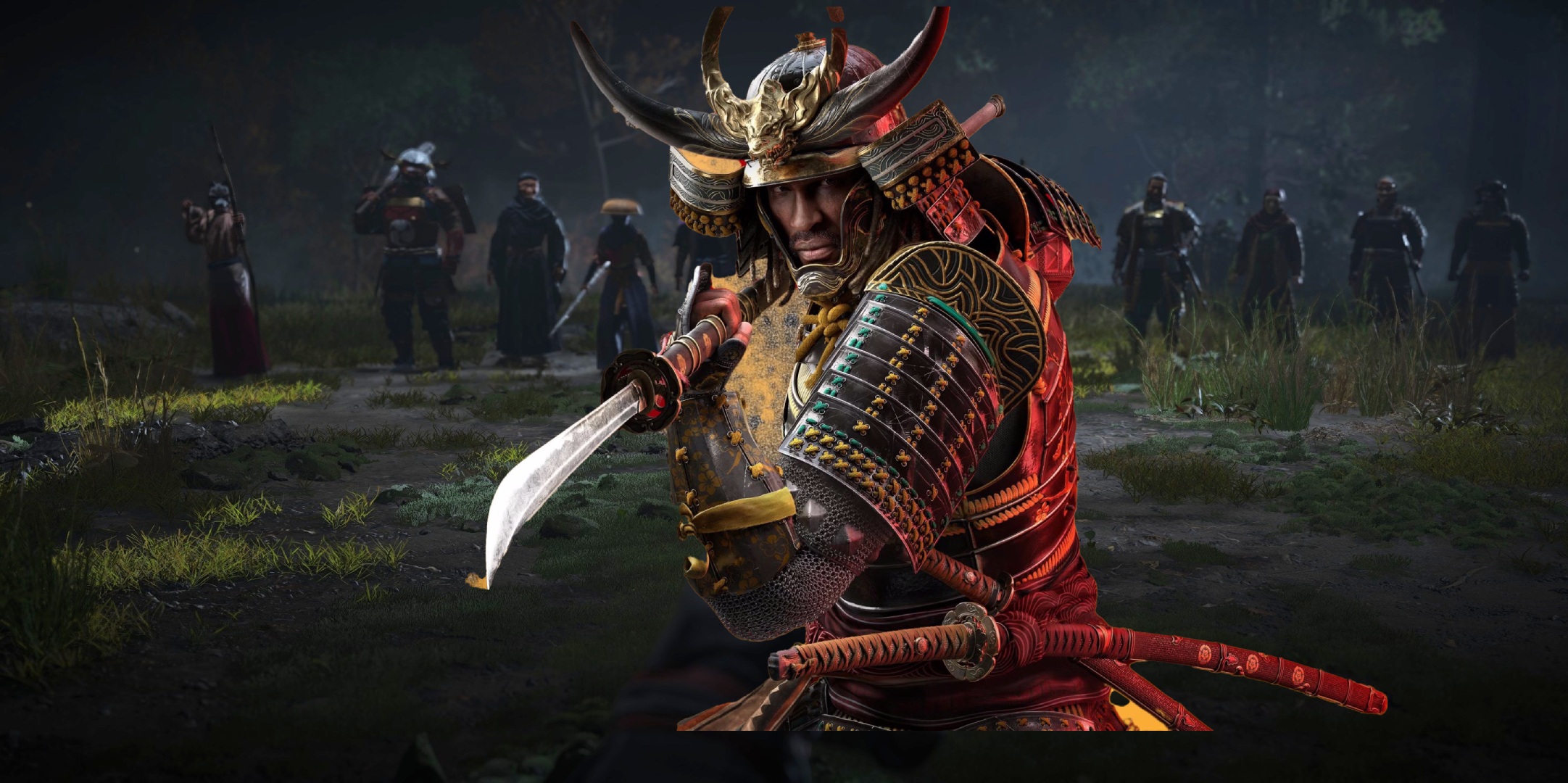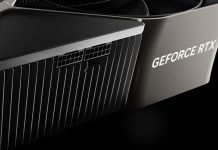No Thanks!
Review Summary
The Zotac GeForce RTX 5080 AMP Extreme Infinity is a premium variant of the card, costing $250 more than the Founder’s Edition. For that, it offers a flashy, premium design, better cooling, and marginally better performance than Nvidia’s own model. However, the performance uplift isn’t worth the $250 extra, and overall, the generational improvement (without MFG) over Ada Lovelace isn’t good enough.
Hours Tested: 11
Overall
-
Performance - 8.5/10
8.5/10
-
Design - 9/10
9/10
-
Features - 8/10
8/10
-
Value - 6.5/10
6.5/10
Pros
- Beautiful design with RGB (incl. RGB diffuser)
- Factory OC
- Excellent cooling
- Improved power efficiency over RTX 4000
- DLSS 4 multi-frame generation
- PCIe Gen 5
- Dual BIOS
- Support bracket included
Cons
- $250 costlier than Founder’s Edition
- No increase in VRAM over previous gen
- Performance uplift without MFG isn’t good enough
Nvidia launched the RTX 5080 (along with the RTX 5090) late last month. The announcement of these GPUs did not receive great reception, owing primarily to Nvidia’s marketing of RTX 5090 performance figures using DLSS 4 Multi Frame Generation (which previous-gen cards do not support). Also, the RTX 5090 received a VRAM bump, but the RTX 5080 didn’t.
In any case, we’re putting the GeForce RTX 5080 AMP Extreme Infinity to the test today. The RTX 5080 is aimed at the 4K gaming market, like the RTX 4080 (Super), even with ray tracing to the mix. The RTX 5000 cards are the first to don this new “AMP Extreme Infinity” lineup, which features gold accents, an Infinity mirror RGB display on the front, and an impressive cooling design. Let’s dive in deeper and take a look.
Key Takeaways
- The Zotac GeForce RTX 5080 AMP Extreme Infinity is Zotac’s most premium RTX 5080 variant, offering unique aesthetics, better cooling, and marginally better performance than the RTX 5080 Founder’s Edition.
- You should get this specific 5080 variant card if you prioritize unique aesthetics, as for the RTX 5080 as a whole, the only reason to buy it is if you’re upgrading from an older gen (like RTX 30-series or before) and want the latest card, even if it costs over MSRP.
- You should not buy the RTX 5080 if you want the most value, as the performance uplift over the Founder’s Edition (considering the $250 higher price) isn’t worth it. Plus, the generational performance uplift isn’t good enough in general.
Here’s a look at the specifications:
| Product | RTX 5080 | RTX 4080 Super | RTX 4090 | RX 7900 XTX |
|---|---|---|---|---|
| GPU Die | GB203 | AD103 | AD102 | Navi 31 XTX |
| Manufacturing Process | 5nm | 5nm | 5nm | 5nm GPU, 6nm MCD |
| Base Clock | 2295 MHz | 2295 MHz | 2235 MHz | 1929 MHz |
| Boost Clock | 2670 MHz | 2550 MHz | 2520 MHz | 2498 MHz |
| Memory | 16 GB GDDR7 | 16 GB GDDR6X | 24 GB GDDR6X | 24 GB GDDR6 |
| Bus Width | 256-bit | 256-bit | 384 bit | 384 bit |
| Shaders | 10752 | 10240 | 16384 | 6144 |
| TMUs | 336 | 320 | 512 | 384 |
| ROPs | 128 | 112 | 176 | 192 |
| Tensor Cores | 336 | 320 | 512 | – |
| Ray Tracing Cores | 84 | 80 | 128 | 96 |
| L1 Cache | 128 KB (per SM) | 128 KB (per SM) | 128KB (per SM) | 256 KB (per Array) |
| L2 Cache | 64 MB | 64 MB | 72 MB | 6 MB |
| TDP | 360W | 320W | 450W | 355W |
| MSRP | $1250 (FE: $1000) | $1000 | $1600 | $850 |
The Founder’s Edition card launched with a $1000 MSRP, the same as the RTX 4080 Super. We can also see that the specifications are quite similar between the two chips. The 5080 has marginally more shaders and RT cores, and its TDP is 40W higher. Not counting DLSS 4, we expect the two cards to perform similarly. That’s not very exciting, considering that their launch prices are the same, but we’ll see just how much they differ in a bit.
Architecture
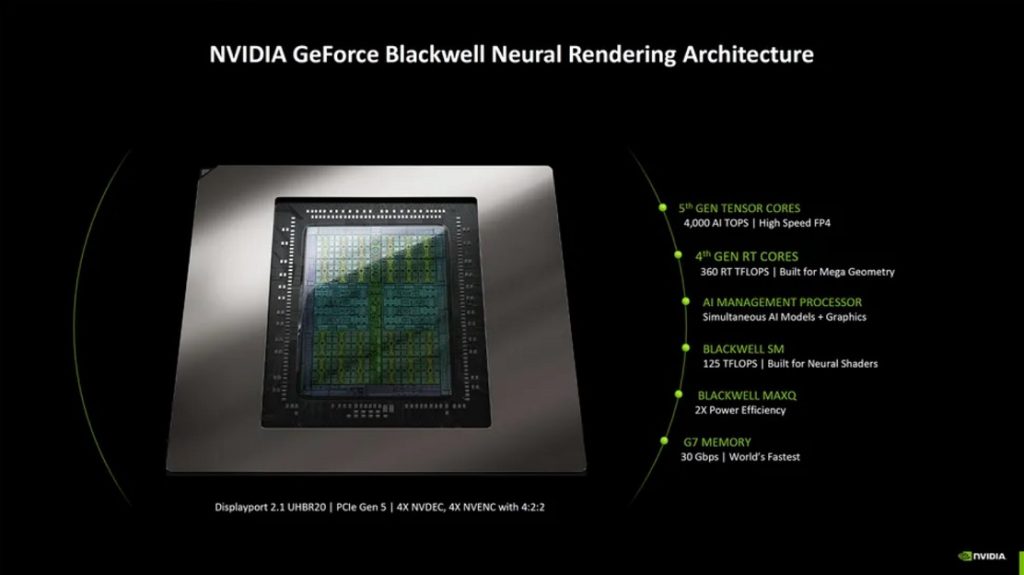
The Nvidia GeForce RTX 5080 is part of the fourth generation of Nvidia’s real-time ray tracing-capable RTX cards. It uses the Blackwell architecture. Powering the RTX 5080 is the GB203, the second most powerful die behind the RTX 5090’s GB202. The processing node is the same as RTX 4000, the “4N,” an optimized 5nm process.
Unlike the RTX 5090’s chip, the 5080’s GB203 has not increased in size, so there’s no room for more transistors. In fact, the transistor count has actually decreased from 45,900M (of the 4080) to 45,600M.
The new GPUs contain a PCIe 5.0 x16 host interface, making them the first consumer GPUs to support PCIe Gen 5. Additionally, they are using Micron’s GDDR7 memory, up from the GDDR6X of the previous generation’s big dogs. GDDR7 supports more than double the bandwidth compared to GDDR6. This memory is clocked at 1875 MHz for an effective memory clock of 30 Gbps and a bandwidth of 960 GB/s with a 256-bit bus.
Improvements
- Video and Display Engines: The new Blackwell cards feature an improved display engine, which includes support for DisplayPort 2.1 (80 Gbps). Nvidia has also updated the media acceleration engine, which now includes updated NVENC video encode accelerators, including support for 4:2:2 AV1 color format, 2x H.264 Decode, and MV-HEVC.
- Uniformity of SIMDs: The Blackwell SMs have 128 SIMD units, each capable of FP32+INT32 simultaneously, unlike Ada’s 64 FPS 32+INT32 and 64 FP32 units of.
- Neural Shaders: The Tensor Cores can be accessed through the Shaders using Microsoft’s new DirectX Cooperative Vectors API.
- Improved Tensor Cores: The Blackwell Tensor cores support INT4 and FP4, which are lower-precision formats but can be operated much faster and require less memory.
- Improved Ray-Tracing Cores: The ray-tracing cores have been improved for better ray intersection performance. The new cores consist of an additional Triangle Cluster Intersection Engine, Linear Swept Spheres, and a Triangle Cluster Decompression Engine. These new components enable ray tracing of “Mega Geometry,” objects with very high polygon counts.
- AI-management processor: Nvidia has added an AI management processor (AMP) to the cards, which will dedicate GPU resources to different, complex AI-related tasks, including multi-frame generation.
The Blackwell GPU
The GB203 chip consists of six GPCs (Graphics Processing Units), each with a dedicated Raster Engine, and six TPCs (Texture Processing Clusters) with two Stream Multiprocessors (SM) each. Each Stream Multiprocessor contains four clusters, each with 32 CUDA Cores and one 4th generation Tensor core.
It also contains a dedicated L0 cache, a Warp Scheduler, and a Dispatch unit capable of dispatching the 32 threads of Warp. We also have Register Files for the threads, four Load/Store units, and a Special Functions Unit (SFU). The SFU performs functions such as trigonometry and logarithmic operations.
Neural Rendering
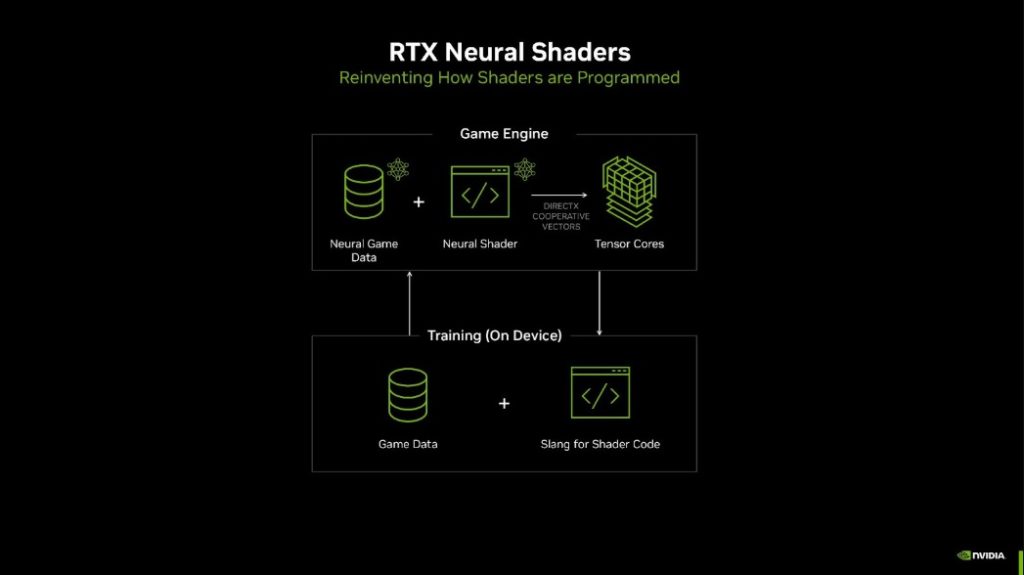
Neural rendering promises to be the next big thing in video game optimization. Microsoft’s Cooperative Vectors API for DirectX will allow Tensor Core access directly from shaders. Developers will be able to integrate neural rendering techniques into graphics rendering processes. These include neural texters, neural materials, neural radiance fields, and more!
In summary, developers should be able to compress complex, computationally expensive functions into smaller pieces, reducing memory utilization and improving optimization.
DLSS 4 And Reflex 2
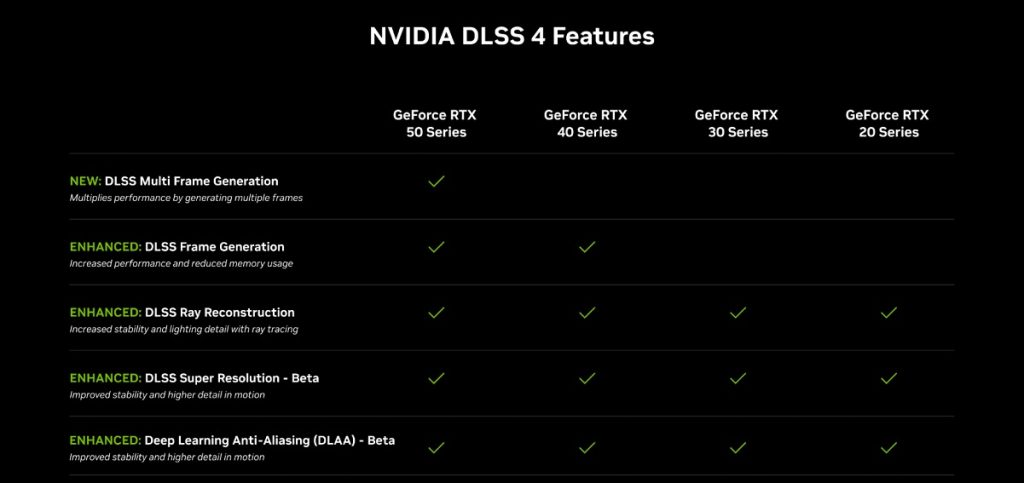
Nvidia DLSS 4 introduces a new Transformer Model for upscaling, ray reconstruction, and anti-aliasing. This model can double the parameters and four times the compute performance. The result is a much higher-quality image than was possible with the Convolutional Neural Network (CNN) model. What’s more, the new model can be utilized by all RTX users going back to the RTX 2000 series.
DLSS 4 also introduces Multi-frame generation, which relies on the 4th generation Tensor cores and is only compatible with RTX 5000. In this process, the Optical Flow Generator takes information from a conventionally rendered frame to generate three frames, compared to one frame of the previous-gen Frame Generation technique. Thus, the computational cost of generating one frame can generate four frames, boosting FPS.
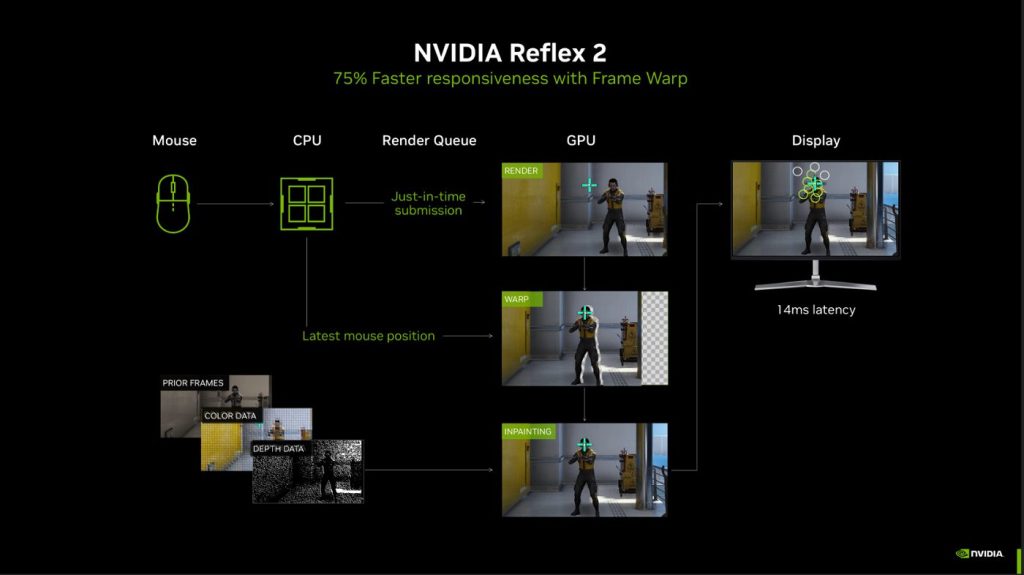
Nvidia Reflex 2 improves on the initial technology by using “Frame Warp.” The Frame Warp uses information about the most recent mouse movement and “warps” the frame to be rendered by the GPU based on that information. As a result, you’ll see the output of your mouse movement ingame as much as 75% faster. Reflex 2 will be supported by all RTX GPUs.
Design
The Zotac GeForce RTX 5080 AMP Extreme Infinity features a gunmetal grey finish on the front and back. It has a triple-fan design with nine curved blades on each, optimized for axial airflow. These are Zotac’s new BladeLink fans. The fans support Automatic Fan Stop, which automatically controls fan speeds based on load.
On the back, we have a metallic backplate with a vent-styled cutout for airflow. We can also see the back of the GPU die here, along with its supporting plate. There is an LED inside to indicate whether or not the power cable is plugged in all the way or not. If it is not plugged in all the way, the light will be red, and the card will not switch on. If everything is set, it will be green.
Looking at the top, we can see the supporting frame painted in golden. On the leftmost side (toward the display connectors) is the “GeForce RTX” text. Moving toward the right are the Zotac Gaming text and logos; the latter is RGB-illuminated. Between the gold frame and the front shroud of the GPU, there’s an RGB strip, the second RGB zone of the card.
We can see the heatsink between the two sides of the supporting frames.
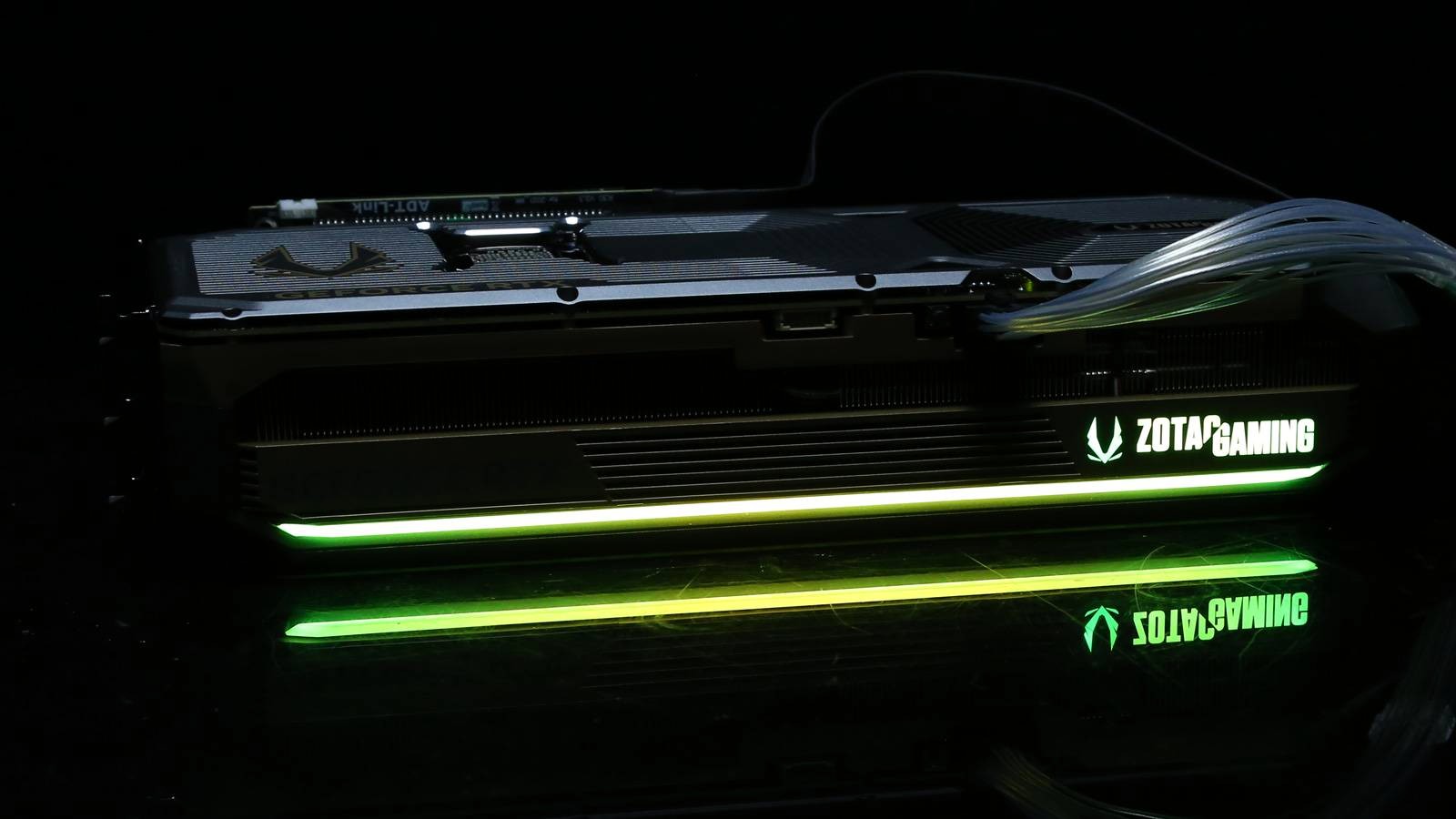
Up above, you can see the GPU with its onboard RGB.
The 16-pin (including 12V-2×6) power connector is located in the center. This can provide up to 600W, while the card consumes 360W. Besides, it has a dual vBIOS button, which can be used to switch the BIOS modes (between Performance and Quiet modes). This will be especially helpful in overclocking scenarios.
Further on the right is a Spectra Link Port for the provided Spectra Connector. This allows you to sync the card’s RGB to your other RGB peripherals using your motherboard’s RGB sync software.
The new display engine on the RTX 5000 cards powers three DisplayPort 2.1b and an HDMI 2.1a. This is a 3.5-slot card, wider than the 3-slot Founders Edition.
Internals and Cooling
When the backplate and cooler are removed, we see thermal pads for the memory chips and VRMs. The PCB reveals the GB203 surrounded by eight 2 GB (32-bit, making the 256-bit bus) memory chips. These are from Samsung and labeled K4VAF325ZC-2C32, the 32 for 32 Gbps.
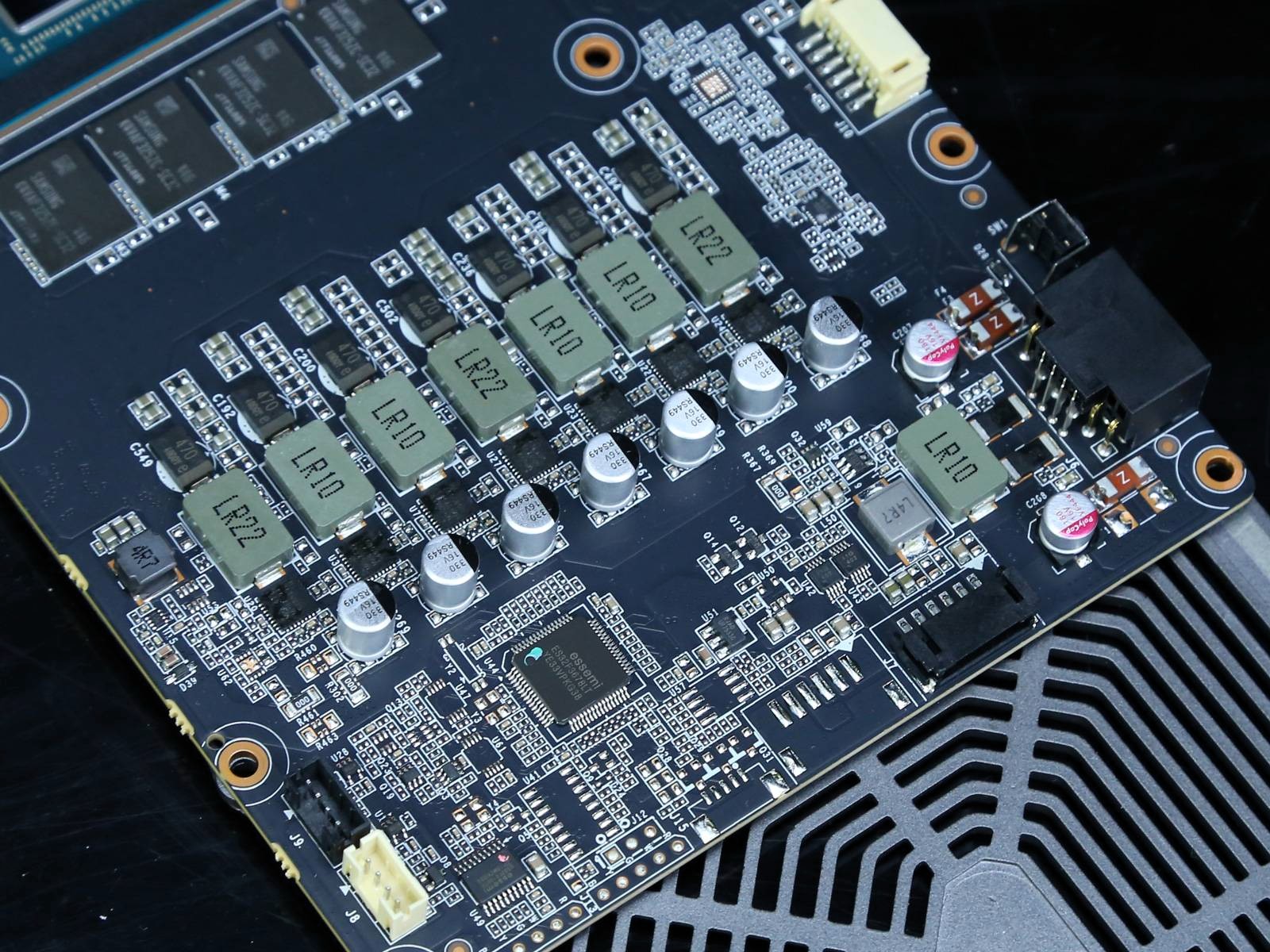
On the VRM side, we have a 14-phase VRM setup for the GPU using MP87993 MOSFETs, controlled by MPS’ MP29816 controller. Meanwhile, three phases are dedicated to the memory chips. These use the same MOSFETs, but the controller is MP2988.
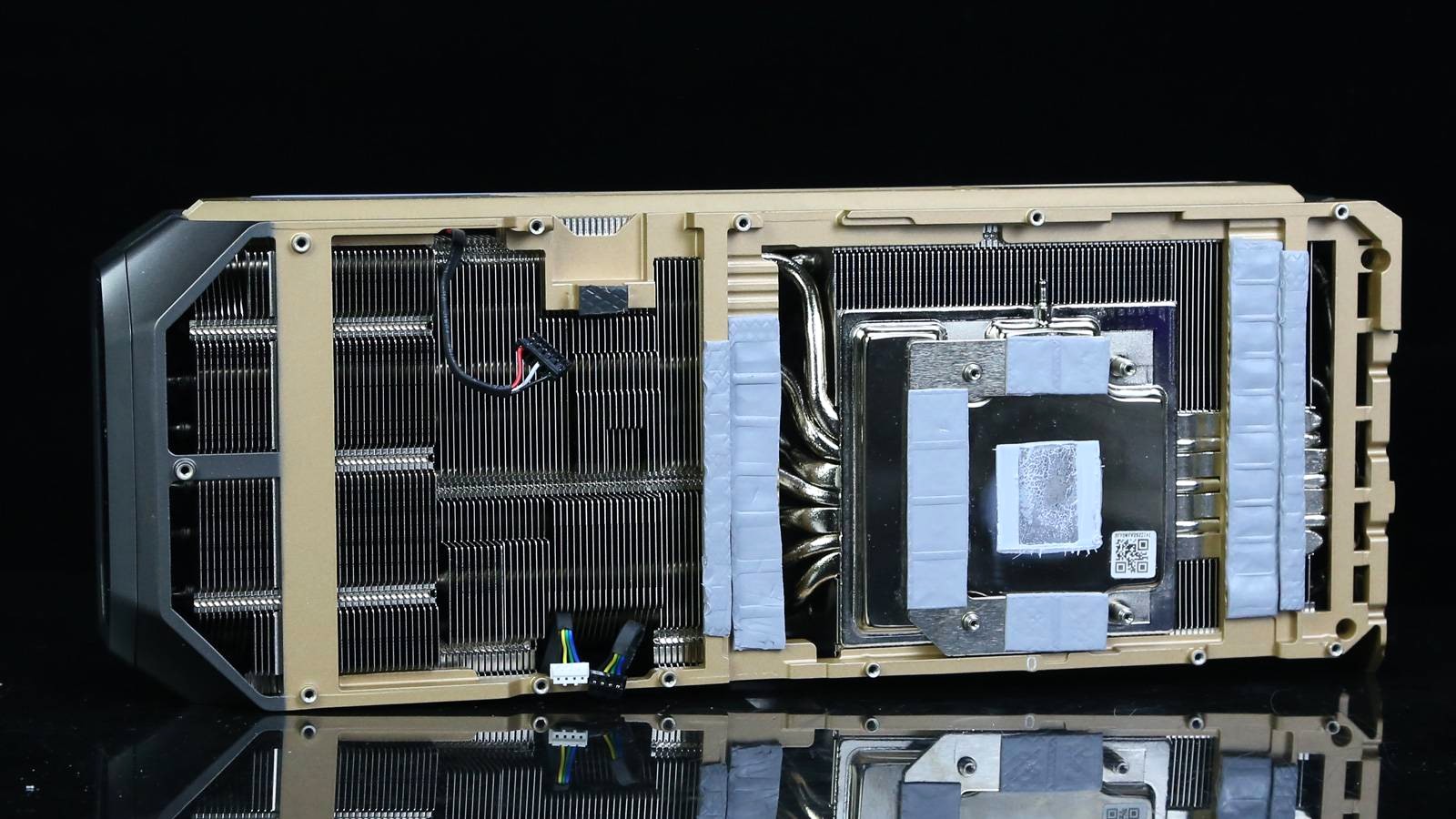
The cooling solution involves the vapor chamber base plate and thermal pads, both of which cool the GPU, memory, and VRMs. According to Zotac, this new vapor chamber is 34% larger than the last generation’s. The heat flows from it to the heatsink, which lies over seven heat pipes. This aluminum heatsink is 3.5 slot-thick. All of this comes as part of Zotac’s IceStorm 3.0 cooling design.
Test Bench
Let’s dive in and see how it performs! Here’s what our test bench looks like:
- CPU: AMD Ryzen 7 9800X3D
- CPU Cooler: DeepCool Mystique 360
- Motherboard: MSI MEG X870E GODLIKE
- Memory: 32 GB (2×16) XPG Lancer RGB DDR5 @ 6000
- Storage for OS: Western Digital SN850 Black 500GB NVMe SSD
- Storage for Software: Sabrent Rocket 4 Plus 2TB Gen4x4 NVMe SSD
- Storage for Games: Sabrent Rocket 4 Plus 4TB Gen4x4 NVMe SSD
- Power Supply: Fractal Design ION+ 2P 860W Platinum
- Operating System: Windows 11 Pro Build 22H2, Build 22621
- GPU Drivers: 572.12 Press Driver
Gaming Benchmark Notes:
- We tested 10 titles for rasterization performance at 1440P and 4K resolutions and five for ray tracing.
- All games were tested at Ultra or equivalent preset.
- Each Nvidia card used the latest available supported DLSS for ray tracing, and FSR was used for the 7900 XTX. Upscaling was not used in F1 24.
1440P Benchmarks
Let’s start with the 1440P tests.
Looking at the 10-game average FPS,
- The RTX 5080 AMP Extreme Infinity is only 8.9% faster than the Founder’s Edition RTX 4080 Super.
- At the same time, it trails the RTX 4090 by 9.3%.
- Compared to the 7900 XTX, the RTX 5080 AMP Extreme Infinity proved 12.1% faster.
4K Benchmarks
Let’s look at the 4K benchmarks.
The RTX 5080 shows strong 4K gaming numbers, but not when compared to the other cards:
- It is only marginally better than the RX 7900 XTX (MSRP: $750), but costs $500 more.
- The RTX 4080 Super falls behind, trailing the RTX 5080 AMP Extreme Infinity card by 12.3%.
- At 4K, the RTX 4090 is 16.4% faster than the RTX 5080.
Ray Tracing at 1440P
Here’s what things are like at 1440P with ray tracing.
Here are the key points for the GPU’s 1440P ray tracing performance:
- The RTX 5080 AMP Extreme Infinity is 10.6% faster than the RTX 4080 Super.
- It lags behind the RTX 4090 by 18.4%.
Ray Tracing at 4K
Finally, a look at the 4K ray tracing numbers.
Turning things up to 4K, here’s the RTX 5080’s AMP Extreme Infinity’s performance compared to competitors when ray tracing is enabled:
- The card outputs 15.5% more FPS than the RTX 4080 Super base model.
- Meanwhile, it was 20.5% slower than the RTX 4090.
Power Consumption and Temperatures
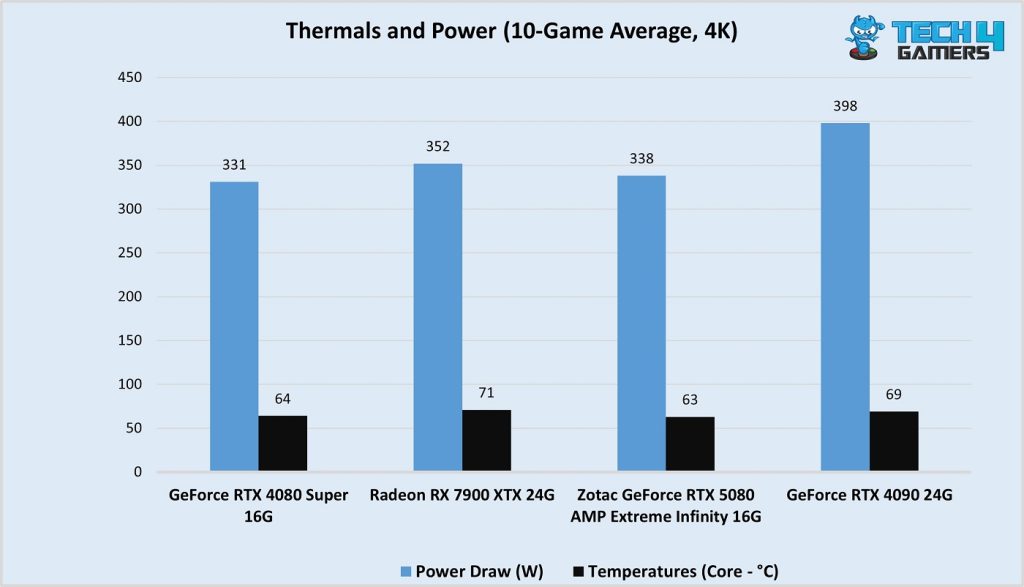
The power consumption statistics reveal that the Zotac GeForce RTX 5080 AMP Extreme Infinity shows roughly the same numbers as the RTX 4080 Super reference card. It consumed 338W on average across our 4K ultra gaming tests while maintaining cool temperatures, maxing out at just 63°C. On average, it ran 1°C cooler than the RTX 4080 Super. The power draw numbers are quite good, considering it outperforms the RTX 4080 Super in all the tests.
Our Analysis: Is The Price Justified?
The Zotac RTX 5080 AMP Extreme Infinity launched with a price tag of $1250, $250 higher than the Founder’s Edition. Unfortunately, none of the cards in discussion today are readily available at MSRP, so we can only discuss their value in relation to the launch price. Nvidia’s “Verified Priority Access” program promises to counter scalping and sell Founder’s Edition cards to gamers, but this program is only available in the US.
Anyhow, compared to the RTX 4080 Super, for example, the card has a $250 higher MSRP (25% higher), but is only 8.9% faster in 1440P gaming, and 12.3% faster at 4K. The card’s best outcome is ray tracing at 4K, where it was 15.5% faster. Not very impressive numbers, especially given that the Founder’s Edition will show even less uplift.
The RTX 4090 FE was 20.5% faster than the RTX 5080 AMP Extreme Infinity (in a BEST-case scenario, i.e., ray tracing at 4K). This is still okay, as the card has a 28% higher MSRP. It also consumes less power, so I can generally recommend it over the RTX 4090.
While no AMD card thus far can compete with Nvidia’s high-end RTX cards in ray tracing, the RX 7900 XTX did well in rasterization benchmarks. Given its $849 MSRP, 47% lower, it only trailed the RTX 5080 AMP Extreme Infinity by 12.1% in 1440P gaming and by just 8.4% in 4K gaming.
Overall, I find it hard to recommend the variant as it costs $250 more than the Founder’s Edition, while the performance bump isn’t all that great. It doesn’t help that the 5080 generally doesn’t show a good enough uplift over Ada Lovelace! Unless you think you’ll be using multi-frame generation a lot, it simply isn’t worth it. As for this Zotac variant, it seems you’re paying the extra premium for the design, which I have to say is quite nice.
Should You Buy It?
Still confused? Here’s the break-down:
Buy It If:
✅You prioritize aesthetics: The Zotac GeForce RTX 5080 AMP Extreme Infinity possesses a unique design featuring two RGB zones and an RGB diffuser at the top side.
✅You’re planning to use Multi Frame-Generation: The RTX 5080 can give you impressive FPS boosts over older-gen Nvidia cards and all AMD cards thanks to Multi Frame-Generation. Without it, the performance uplift over the RTX 4080 (Super) is unimpressive.
✅You’re after impressive thermal efficiency: The card’s thermal efficiency is better than that of the Founder’s Edition variant.
Don’t Buy It If:
❌You don’t need the aesthetics: If aesthetics are not a priority, you’ll be better off with the Founder’s Edition card, saving $250 for a small performance loss.
❌You want the best rasterization performance: Without MFG, this card’s performance uplift isn’t worth it over the previous generation.
My Thoughts
The Zotac RTX 5080 AMP Extreme Infinity was our introduction to the RTX 5000 series. Being an AIB GPU, the card offers unique aesthetics and better cooling than the Founder’s Edition card. The only specification difference is the faster boost clock speed it offers. It shows a decent uplift over the reference card, but not one that justified its $250 uplift over it.
Compared to the RTX 4080 Super, the performance uplift is simply not good enough, especially considering the price tag. Similarly, the RX 7900 XTX offers the best value for rasterization as its MSRP is much lower than the RTX 4080 Super and RTX 5080 AMP Extreme Infinity, but the performance is comparable.
Nvidia brings software-level changes with the RTX 5000 series, including DLSS 4 and Reflex 2. So far, they seem to be the most exciting part of this launch. The new DLSS 4 Transformer Model means you can get improved image quality and (potentially) more FPS for even the old RTX 2000 series cards! Similarly, Reflex 2 will be supported by all RTX cards but initially, it will only be supported by RTX 5000 cards.
If you’re okay with using frame generation, which is the only way this card will significantly outperform the competition in gaming performance, then the RTX 5080 is a good investment. Multi-frame generation can boost FPS over eight times compared to native rendering. Combined with Super Resolution, up to 15 of every 16 frames can be generated by AI for a huge FPS boost. If AI-generated frames don’t excite you, skip this card (by “this card,” I mean the RTX 5080 in general).
Thank you! Please share your positive feedback. 🔋
How could we improve this post? Please Help us. 😔
[Hardware Reviewer]
Hi! I’m Ali Tauseef, and I have been writing for Tech4Gamers since 2022. I love all things computer hardware but am particularly fond of CPUs and motherboards, and I like to stay up-to-date about the latest advancements in these worlds, and when possible, write about it. When I’m not doing that, I like to get into a little FPS action in CS2 or get lost in the vast world of RDR2.
Get In Touch: ali@tech4gamers.com


 Threads
Threads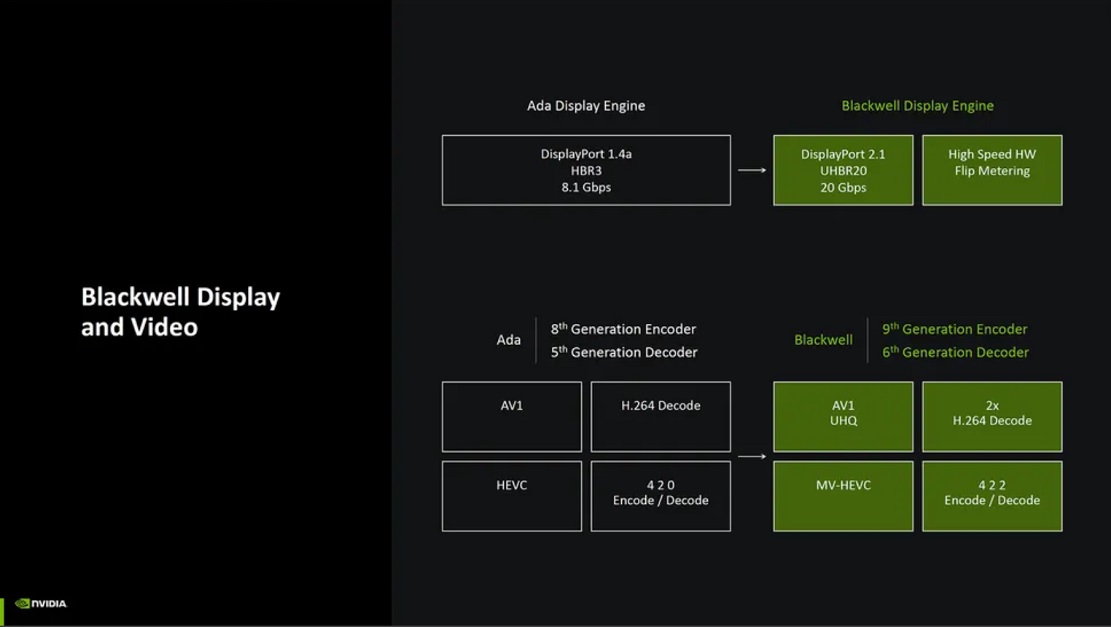
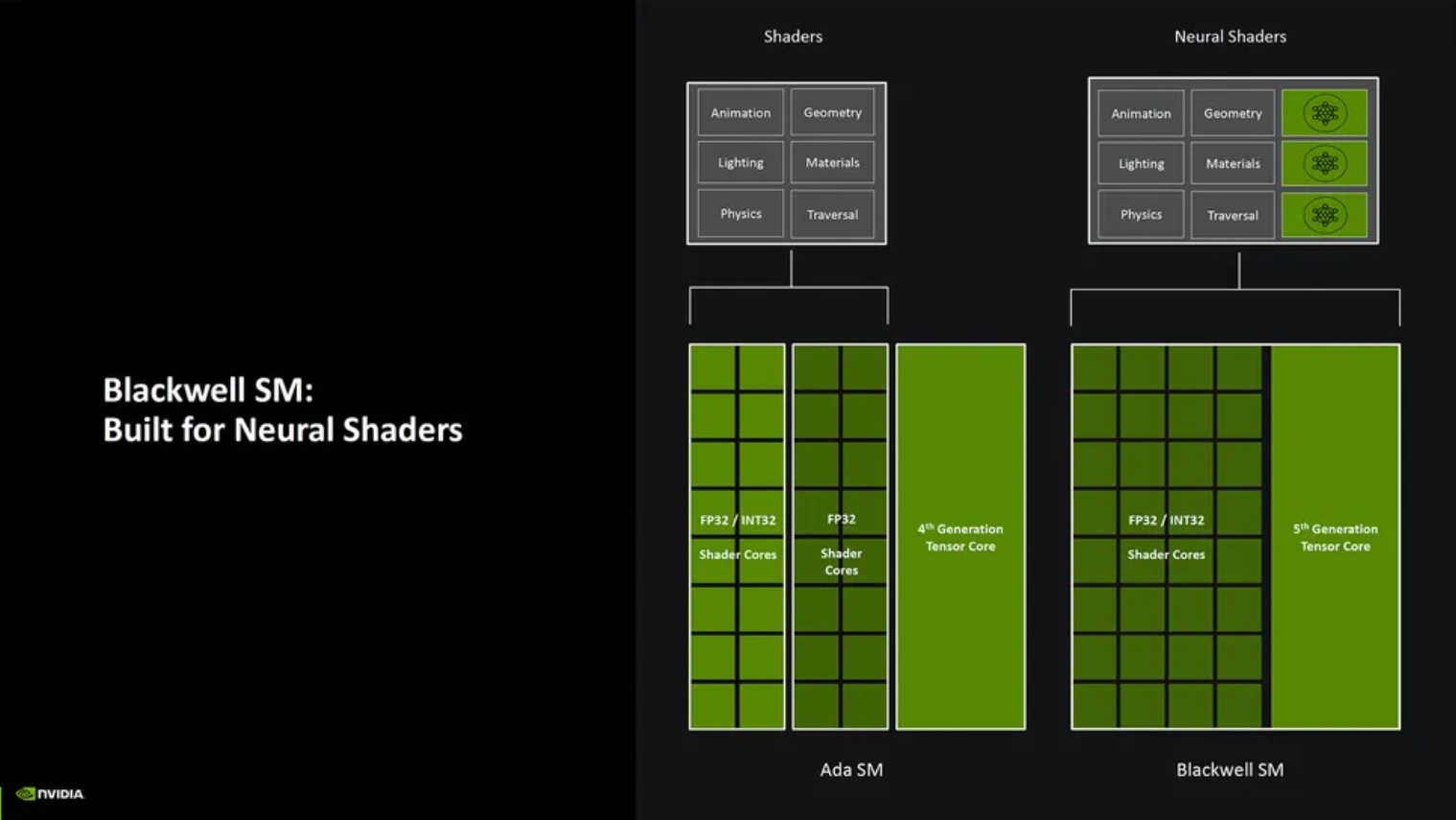
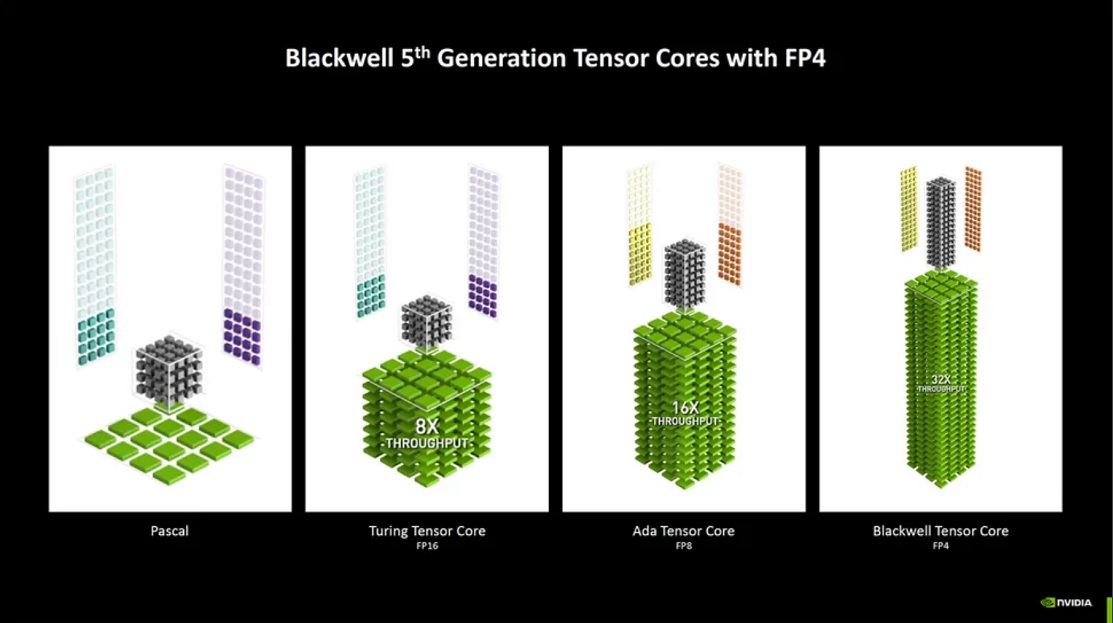
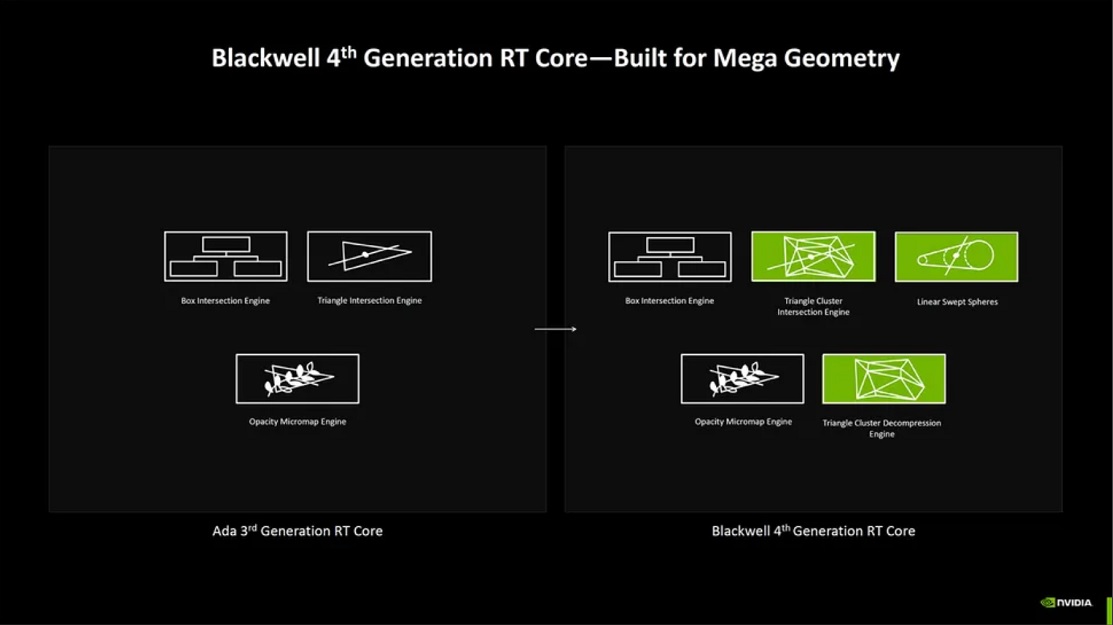
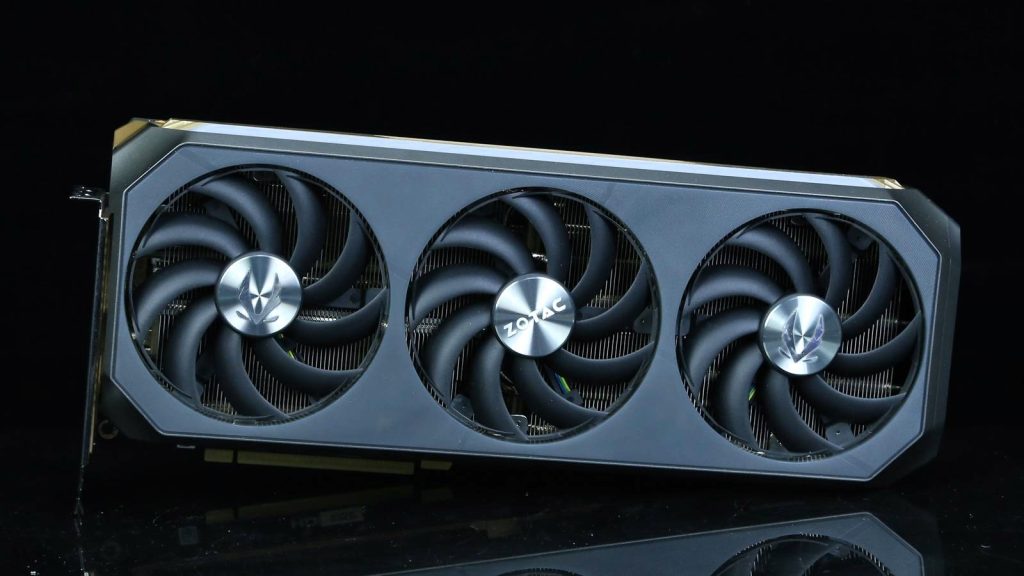
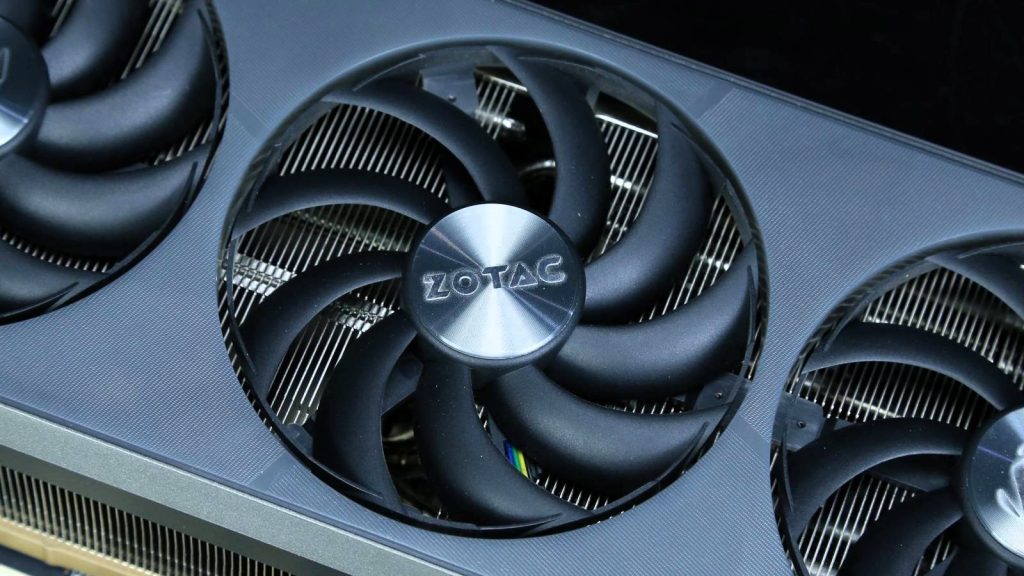
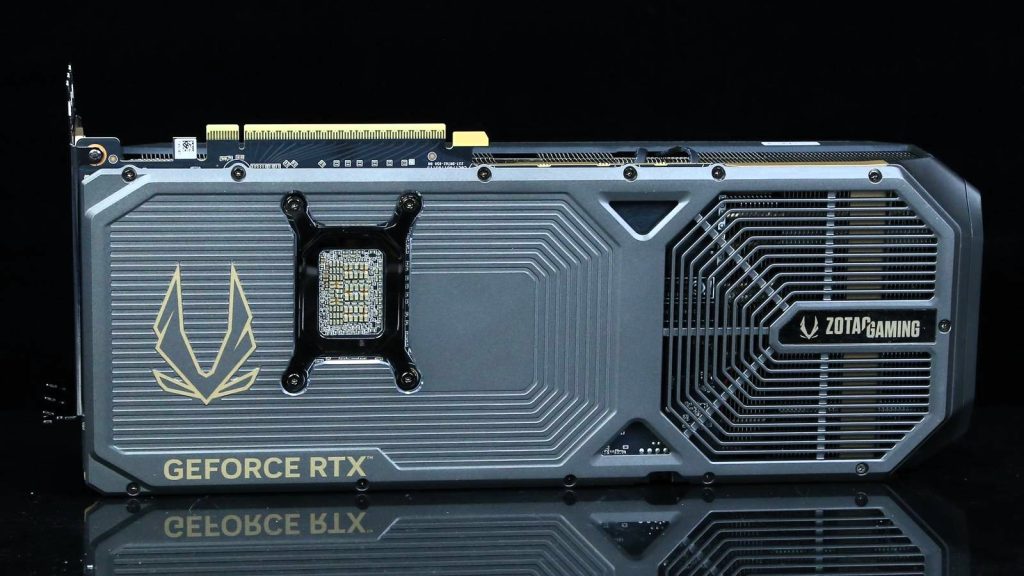
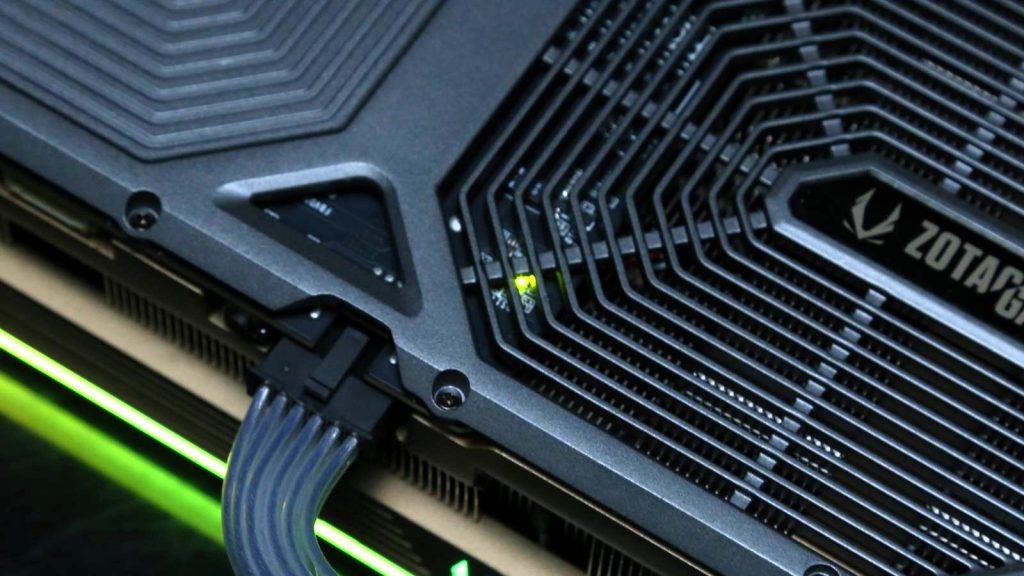
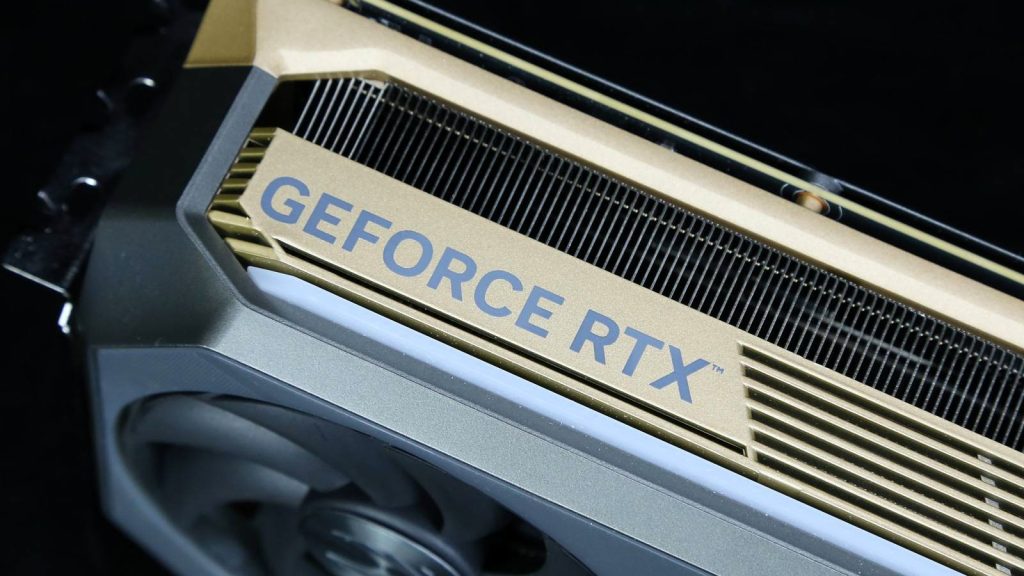
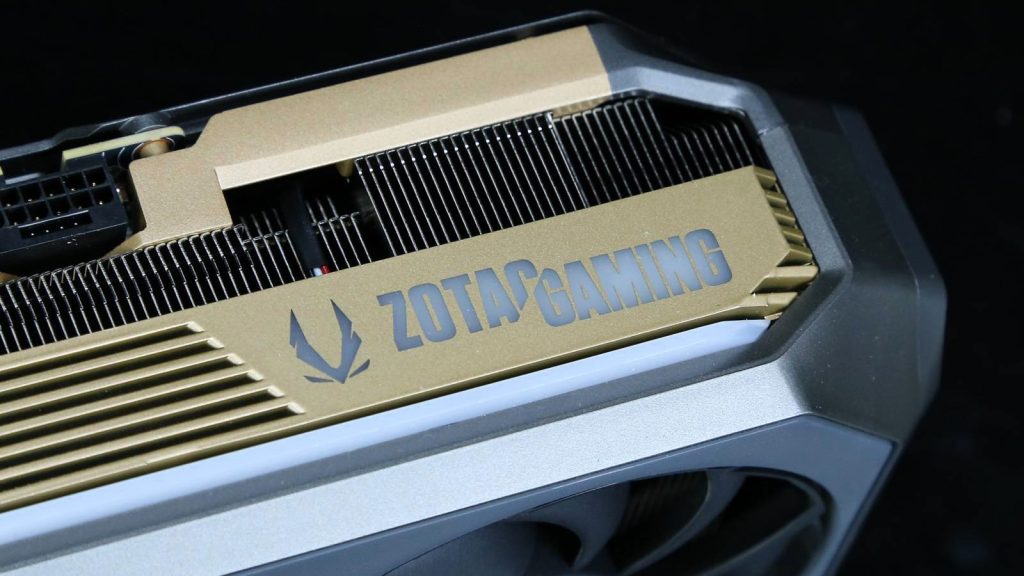
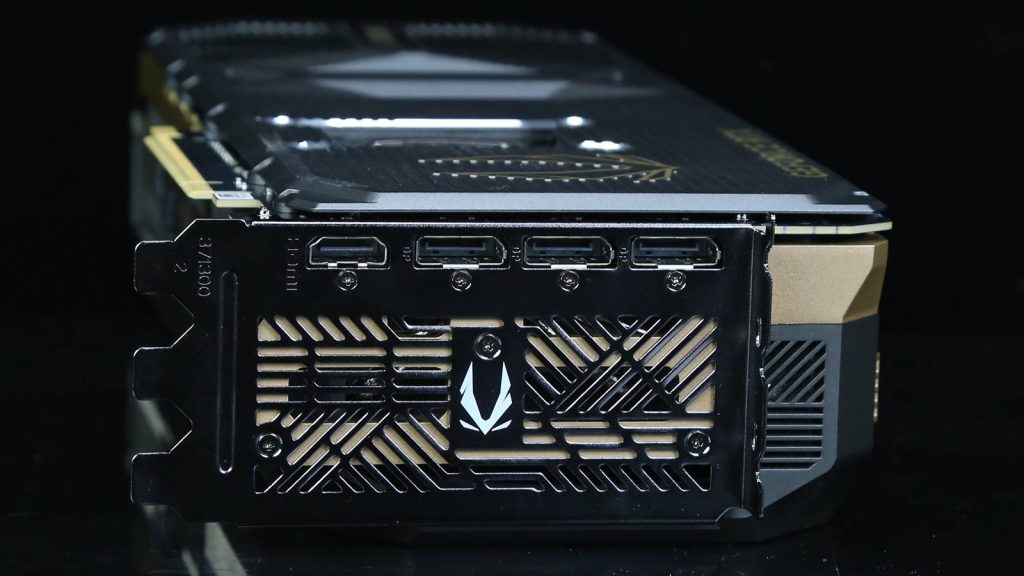
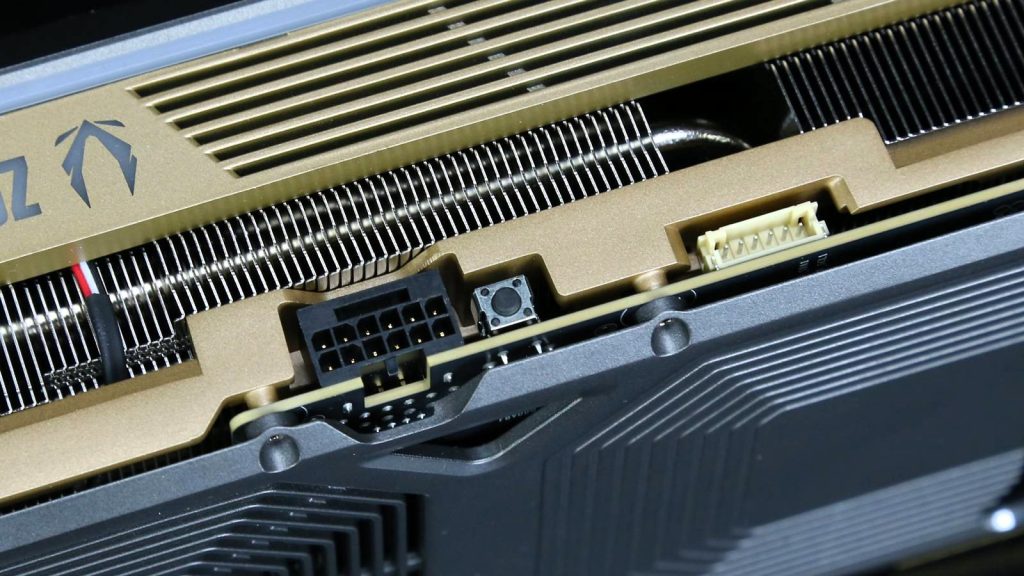
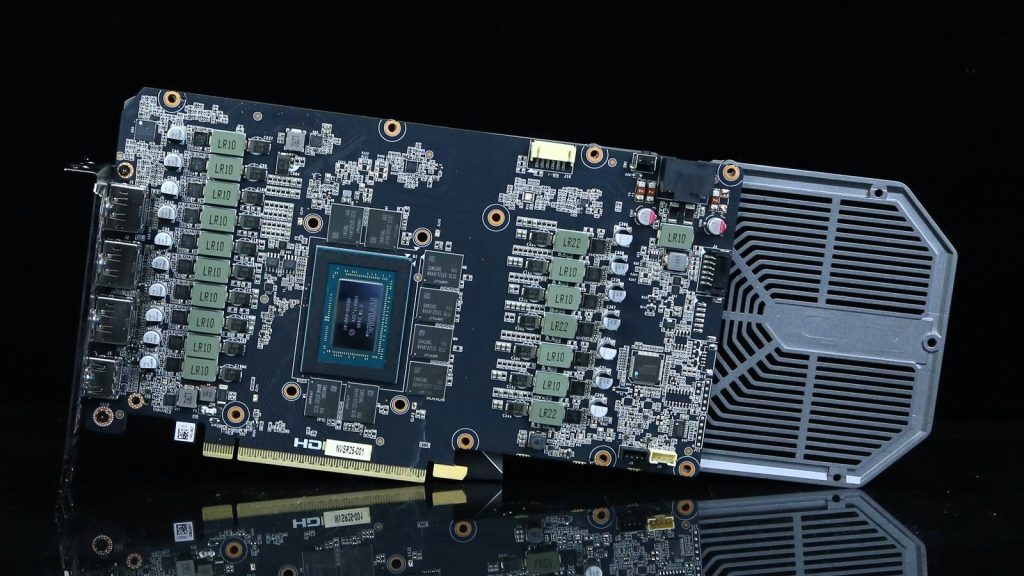
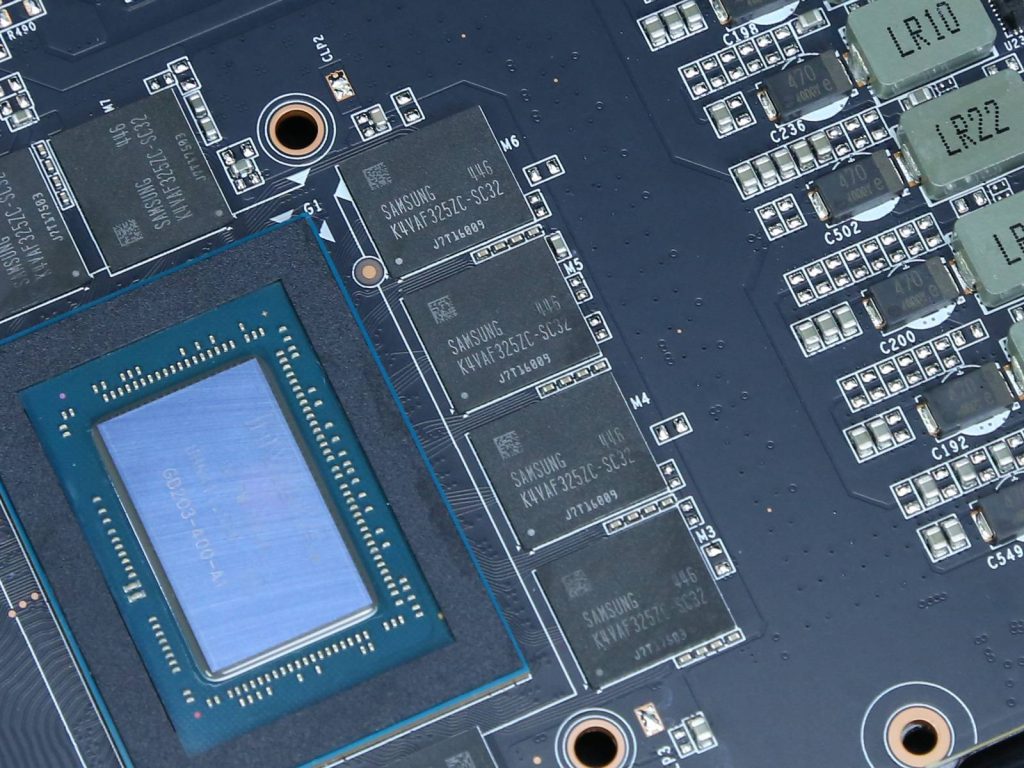


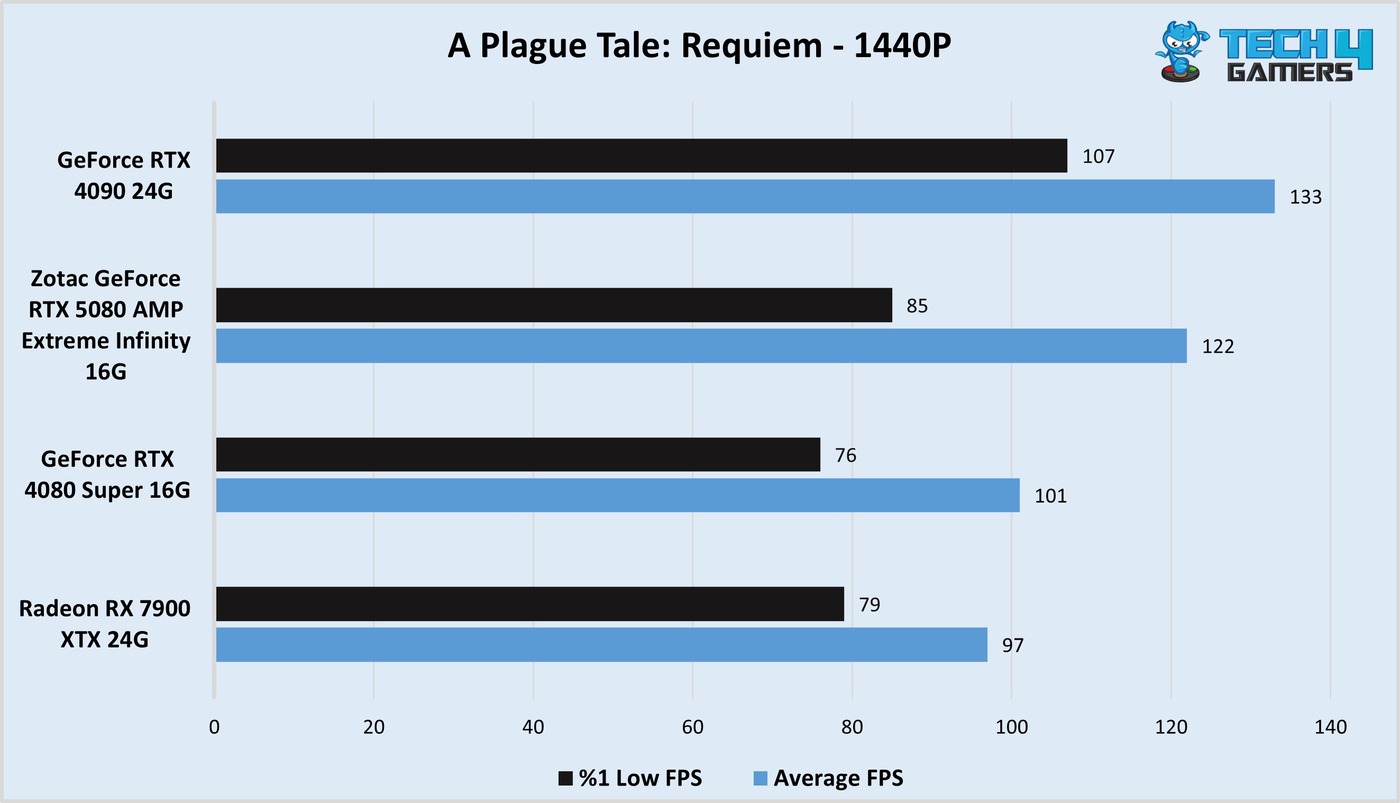
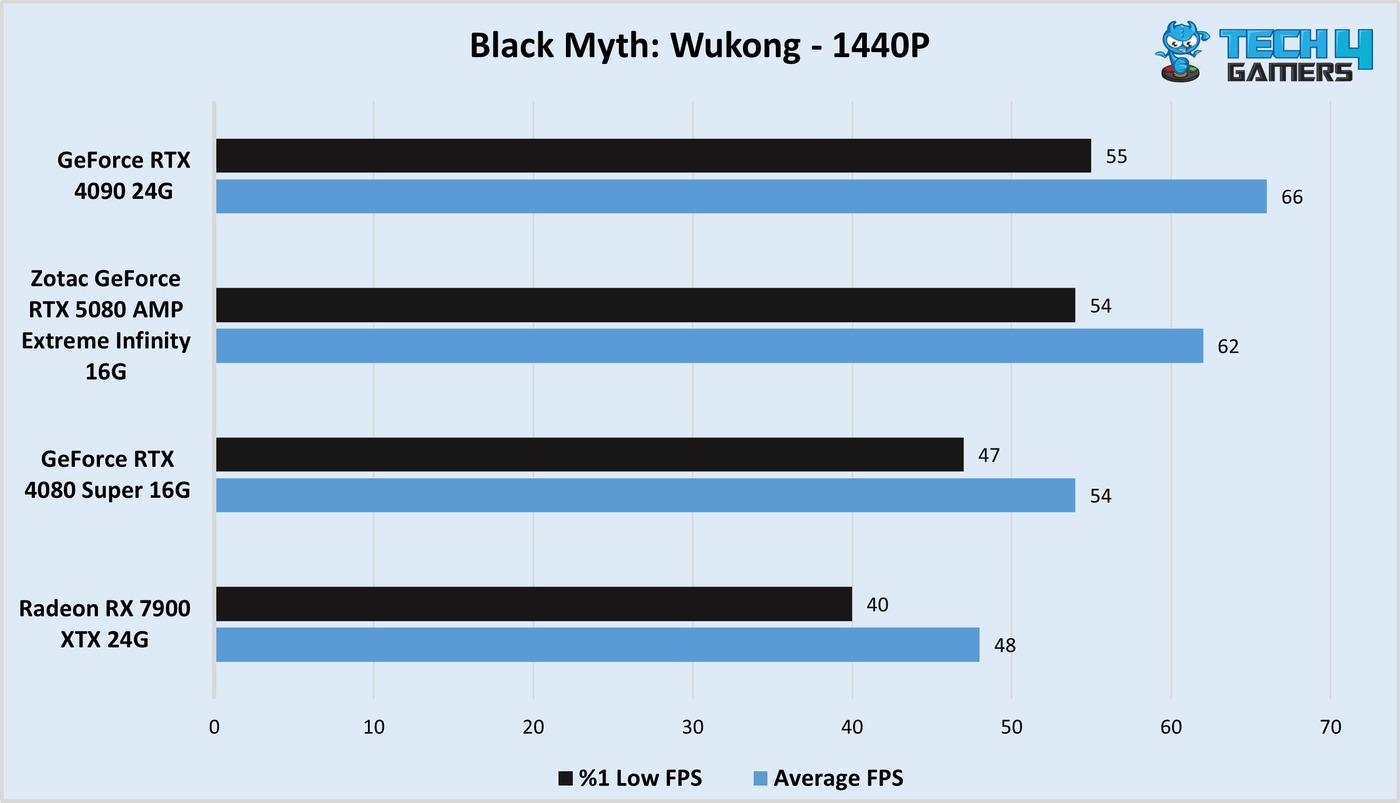
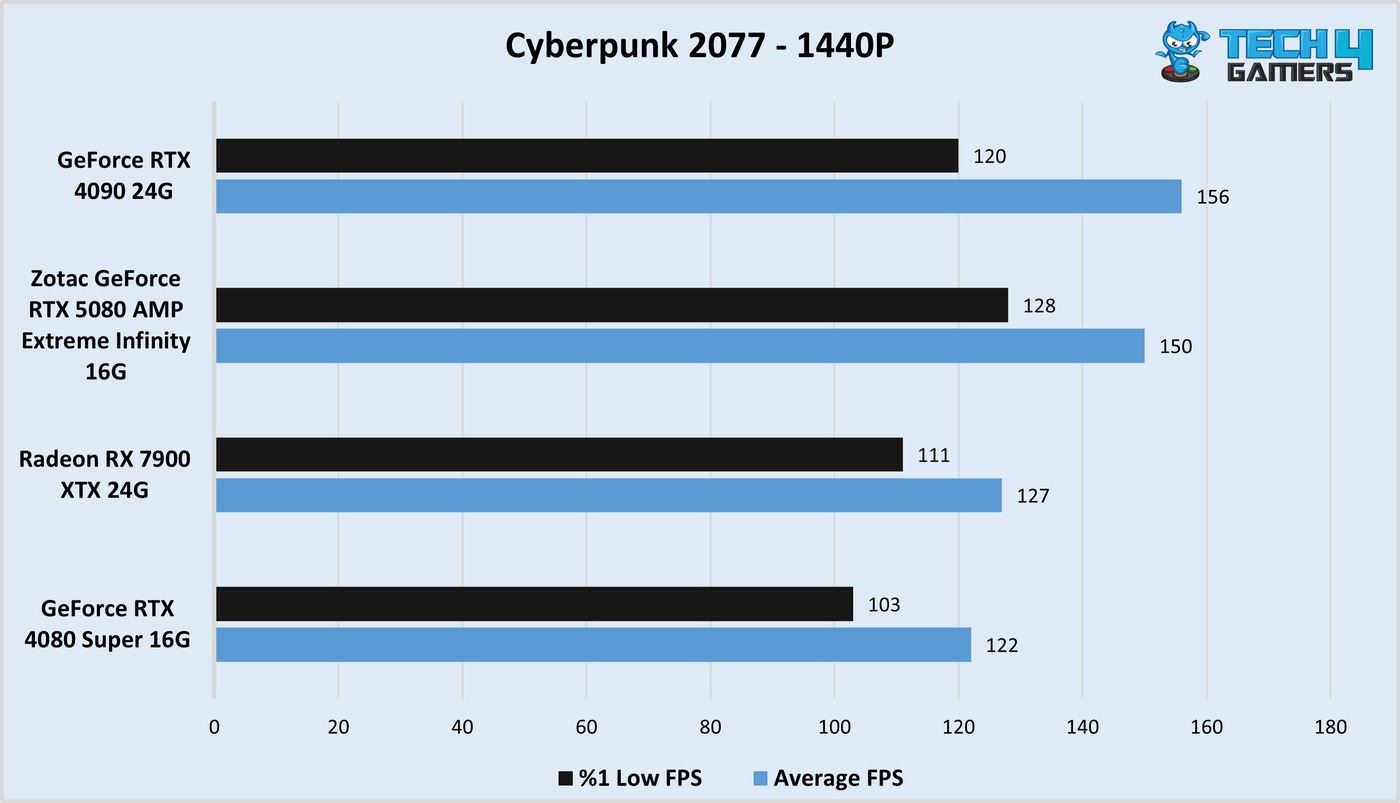
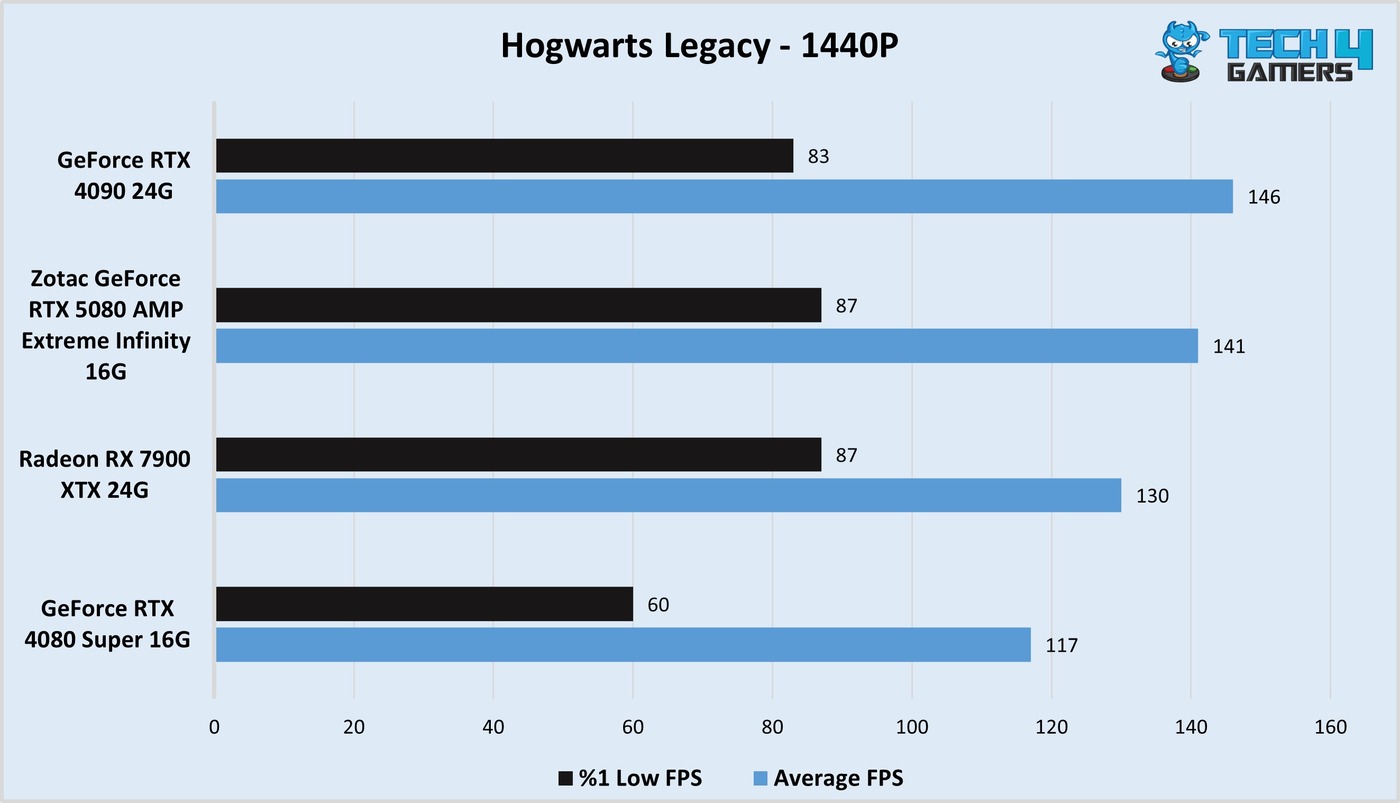
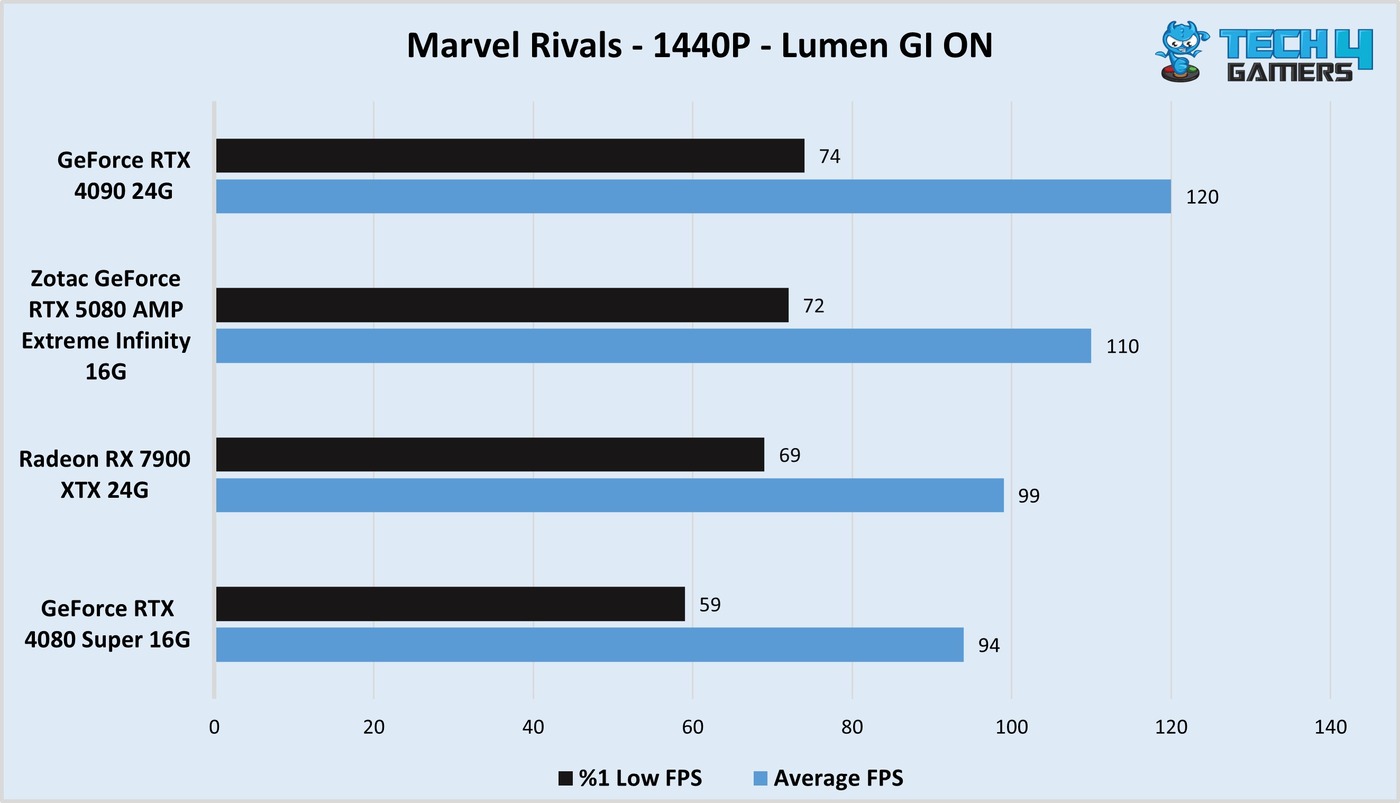
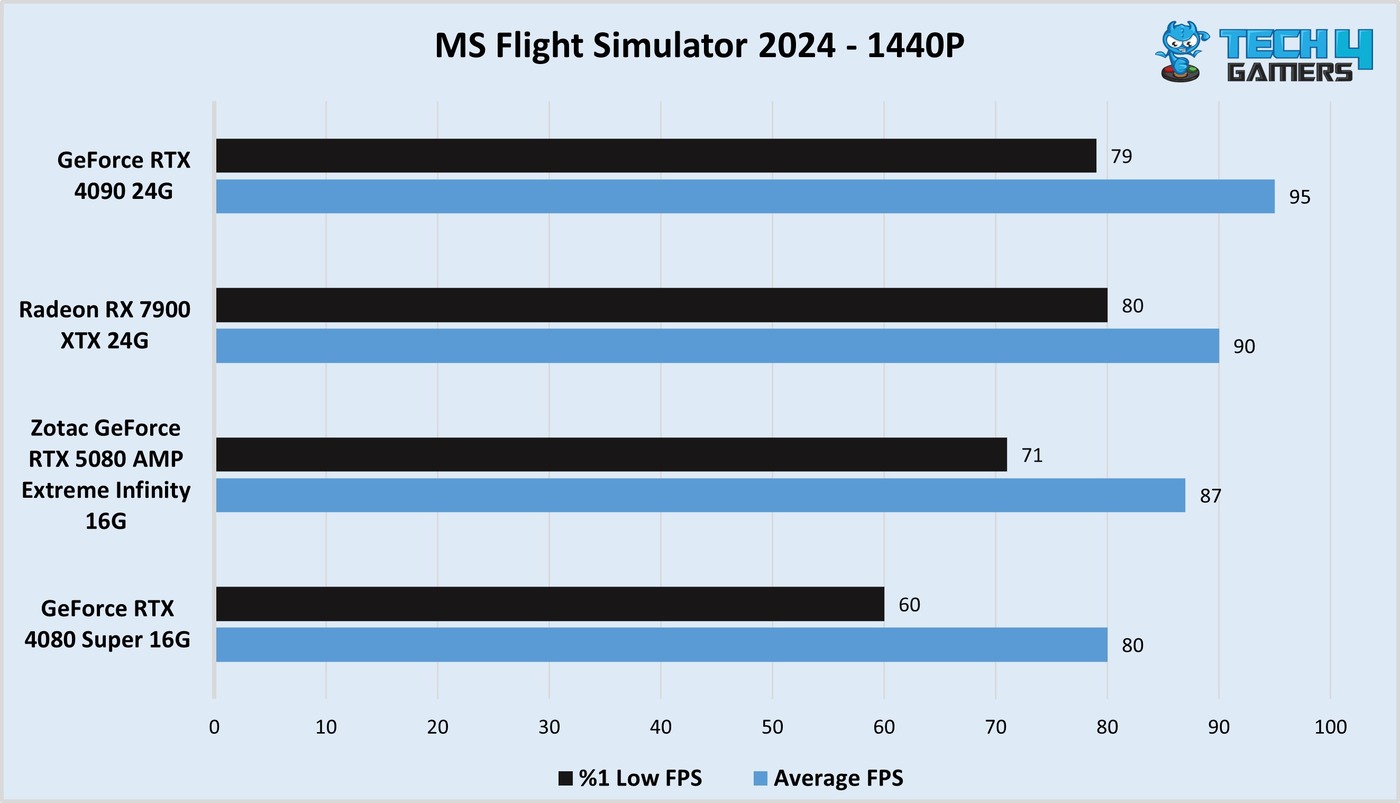
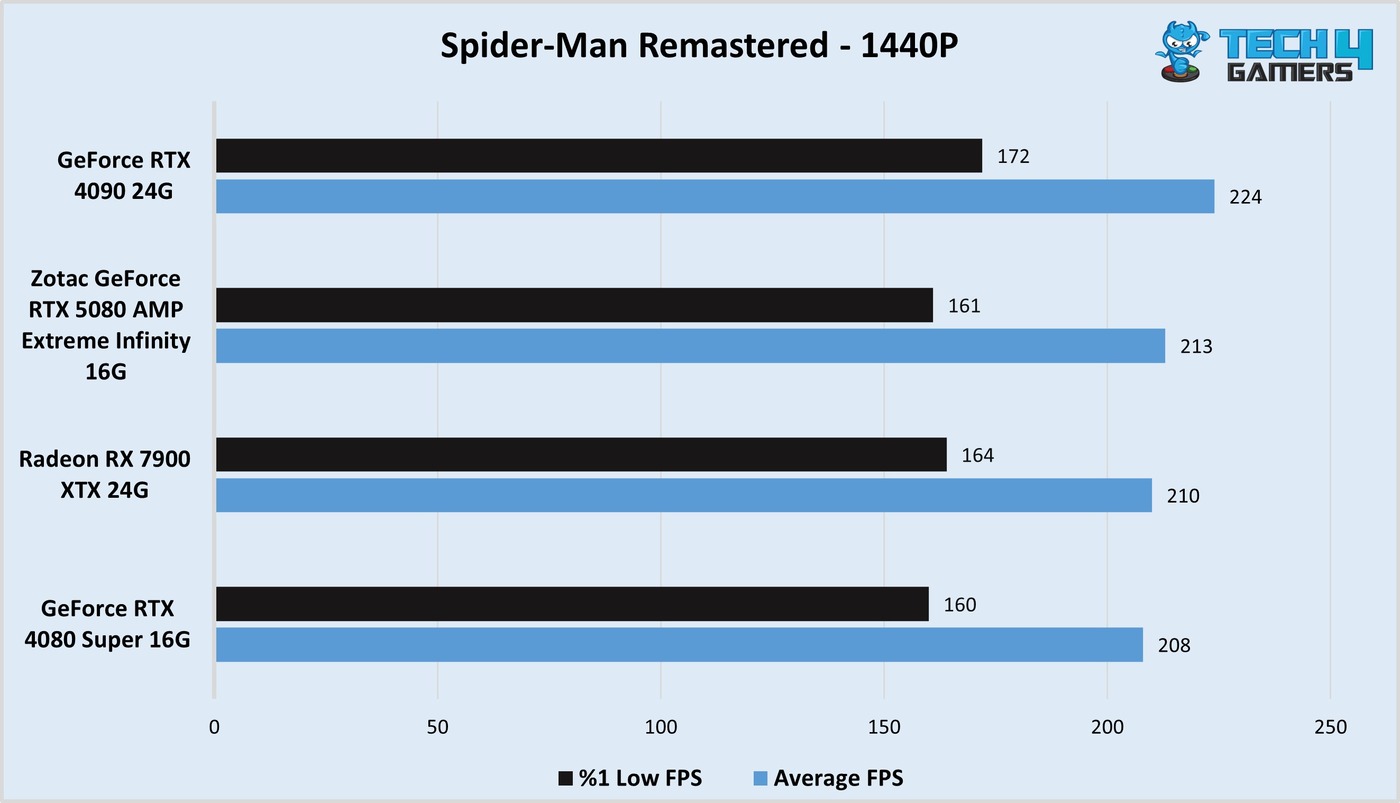
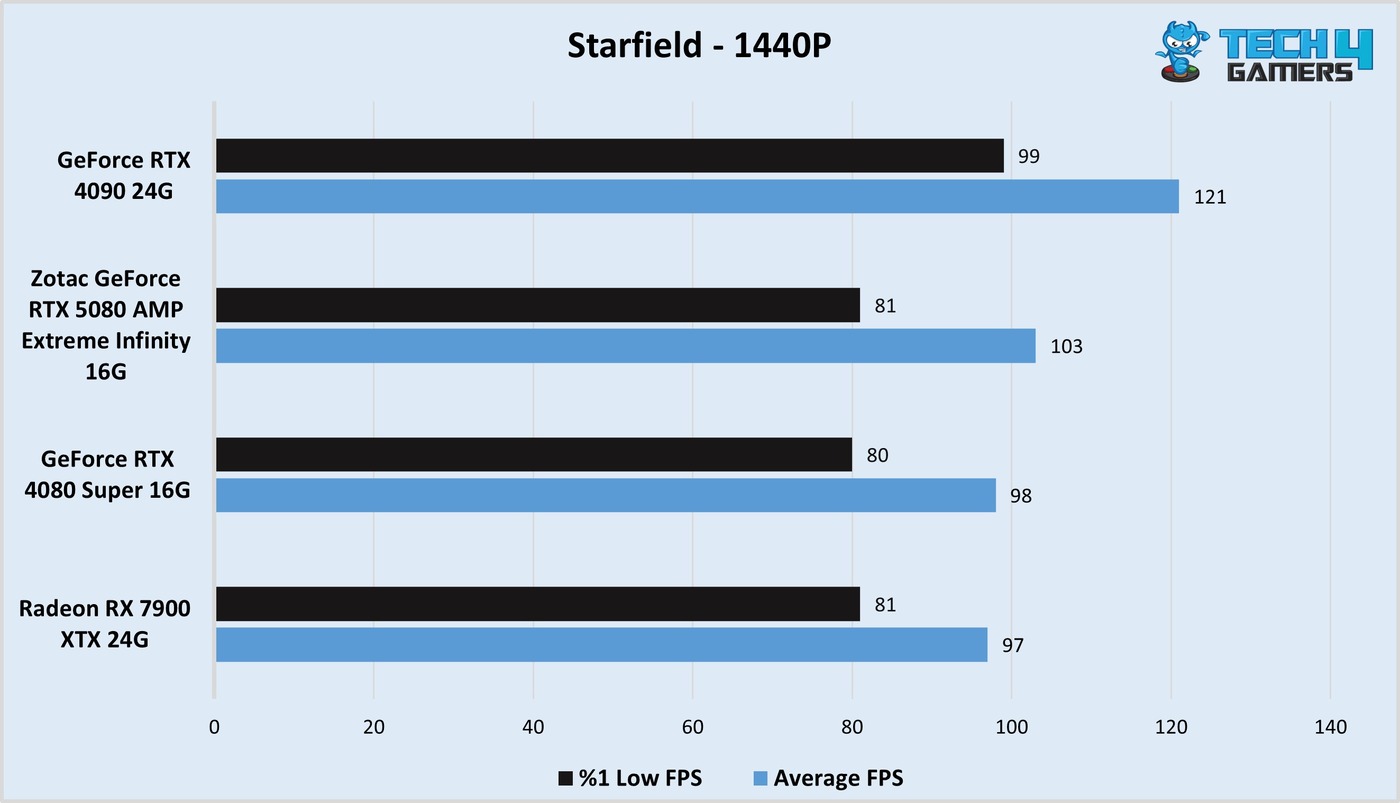
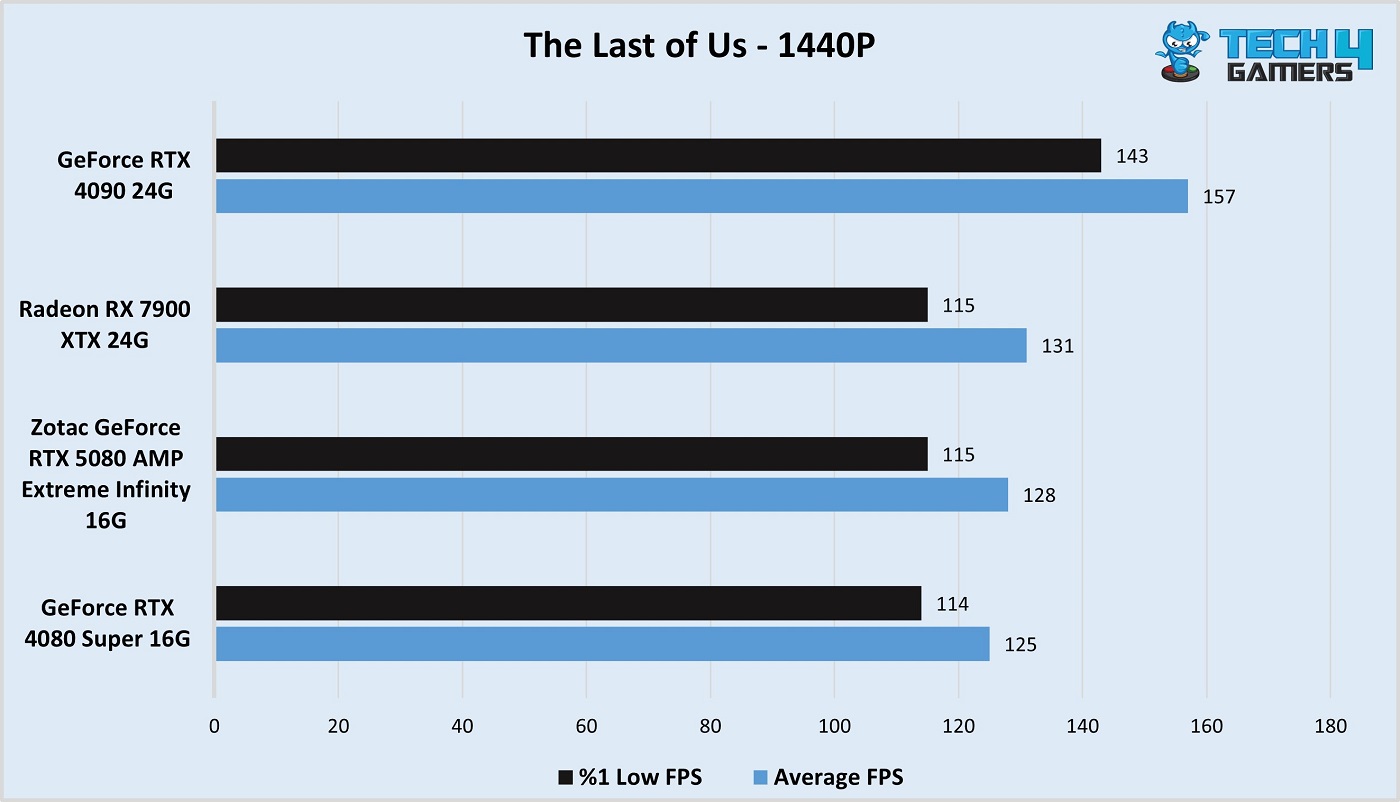
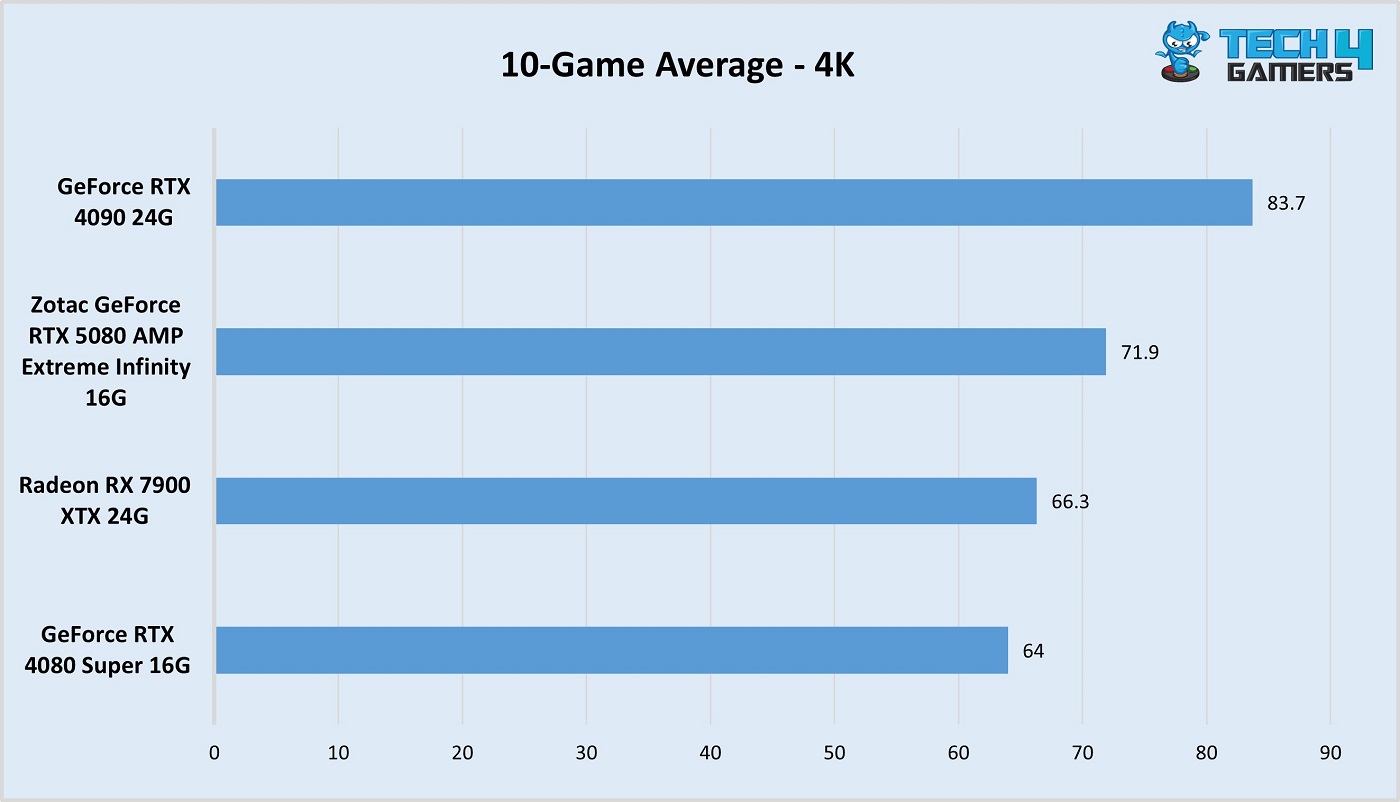
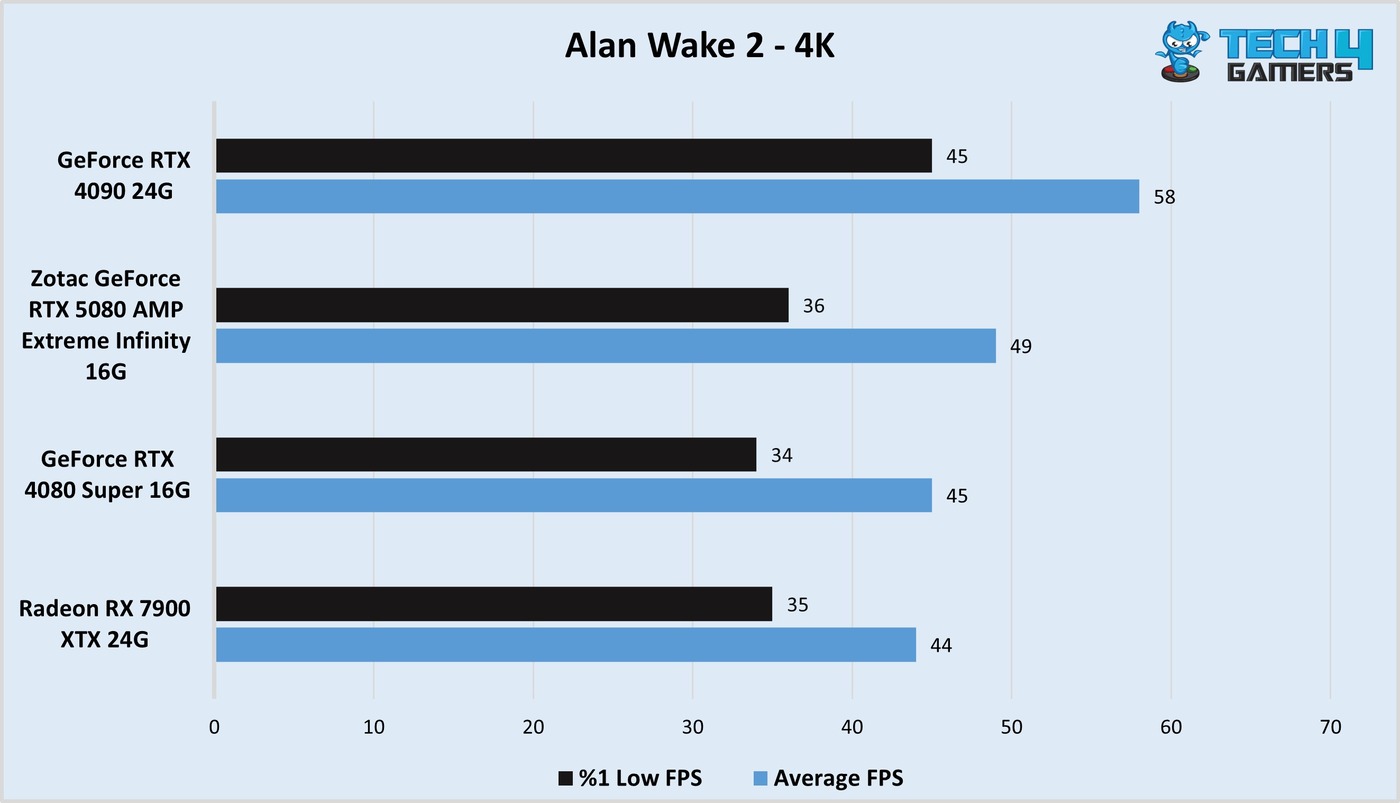
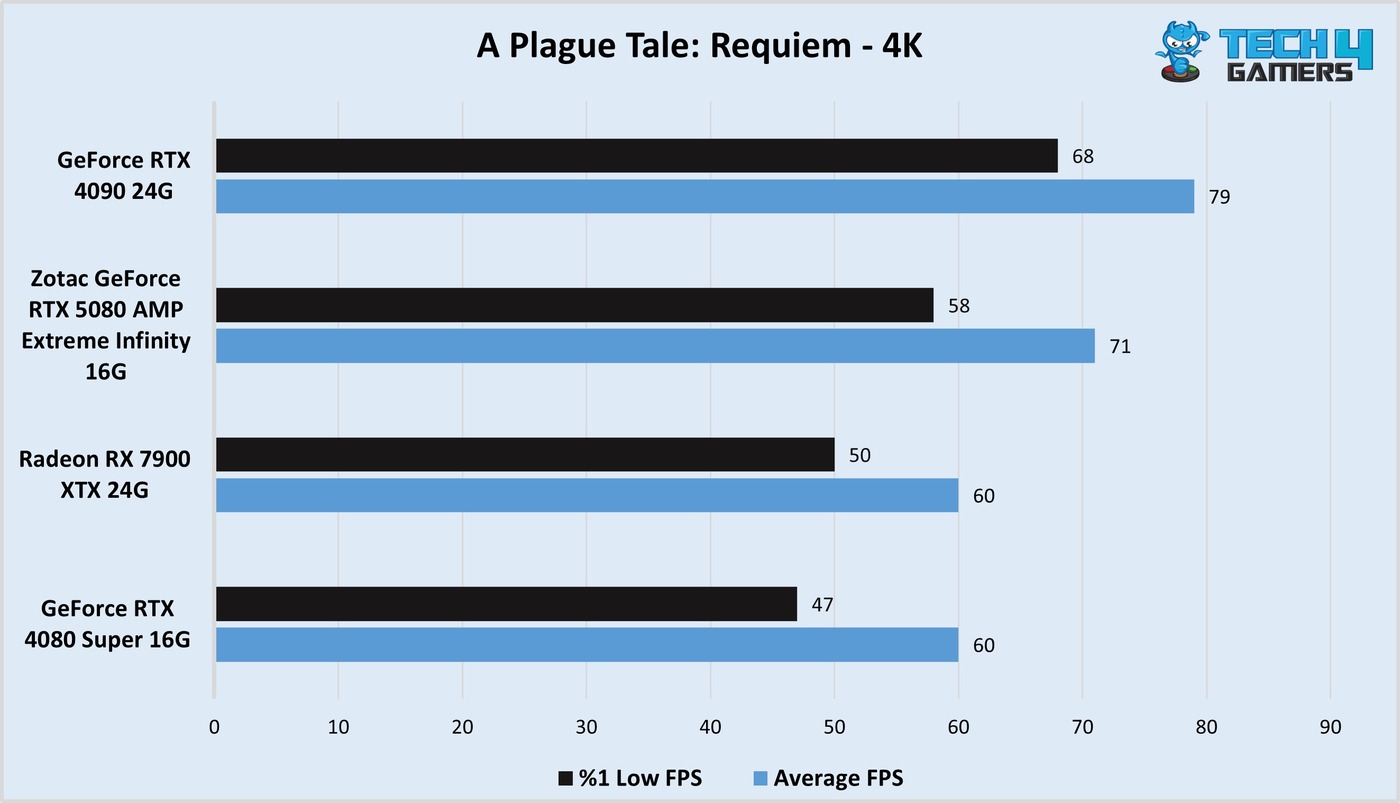
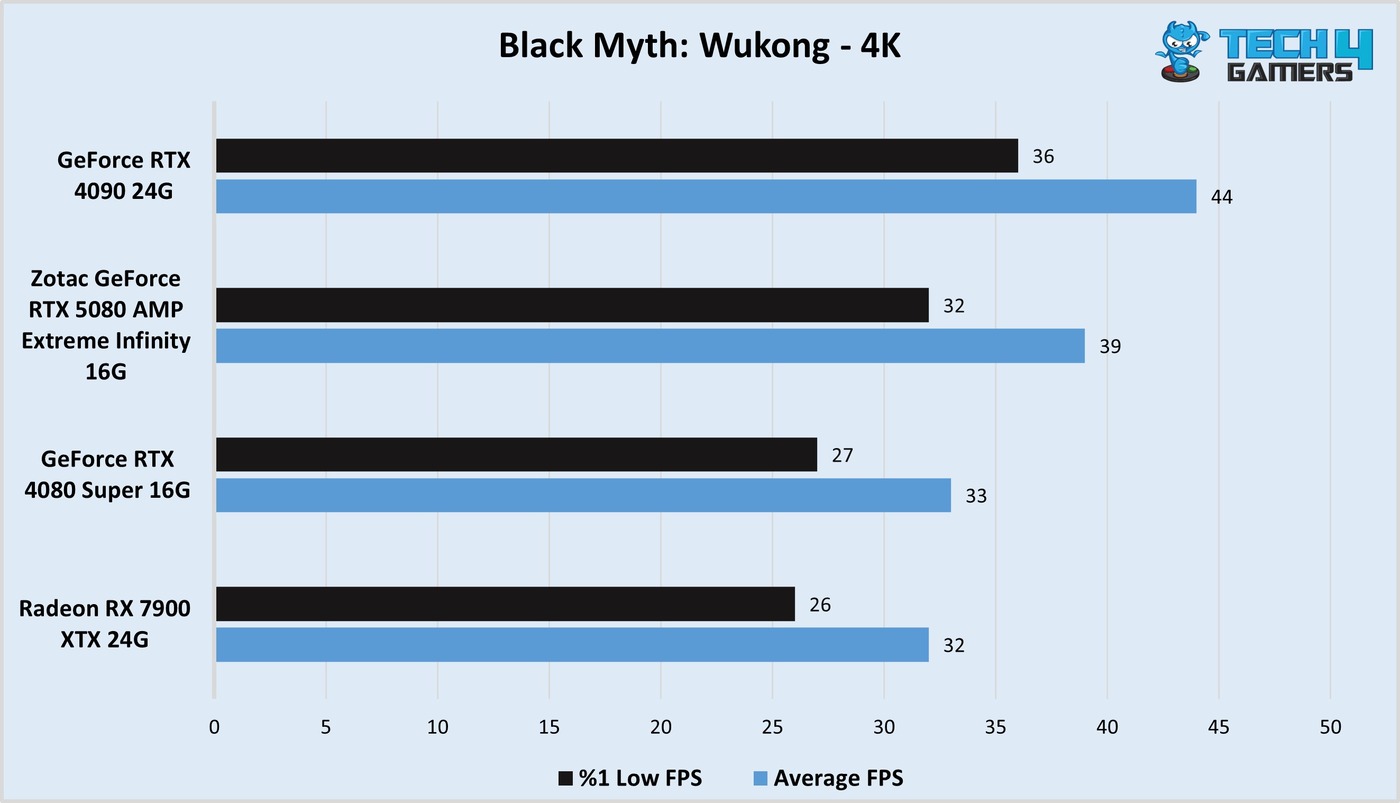
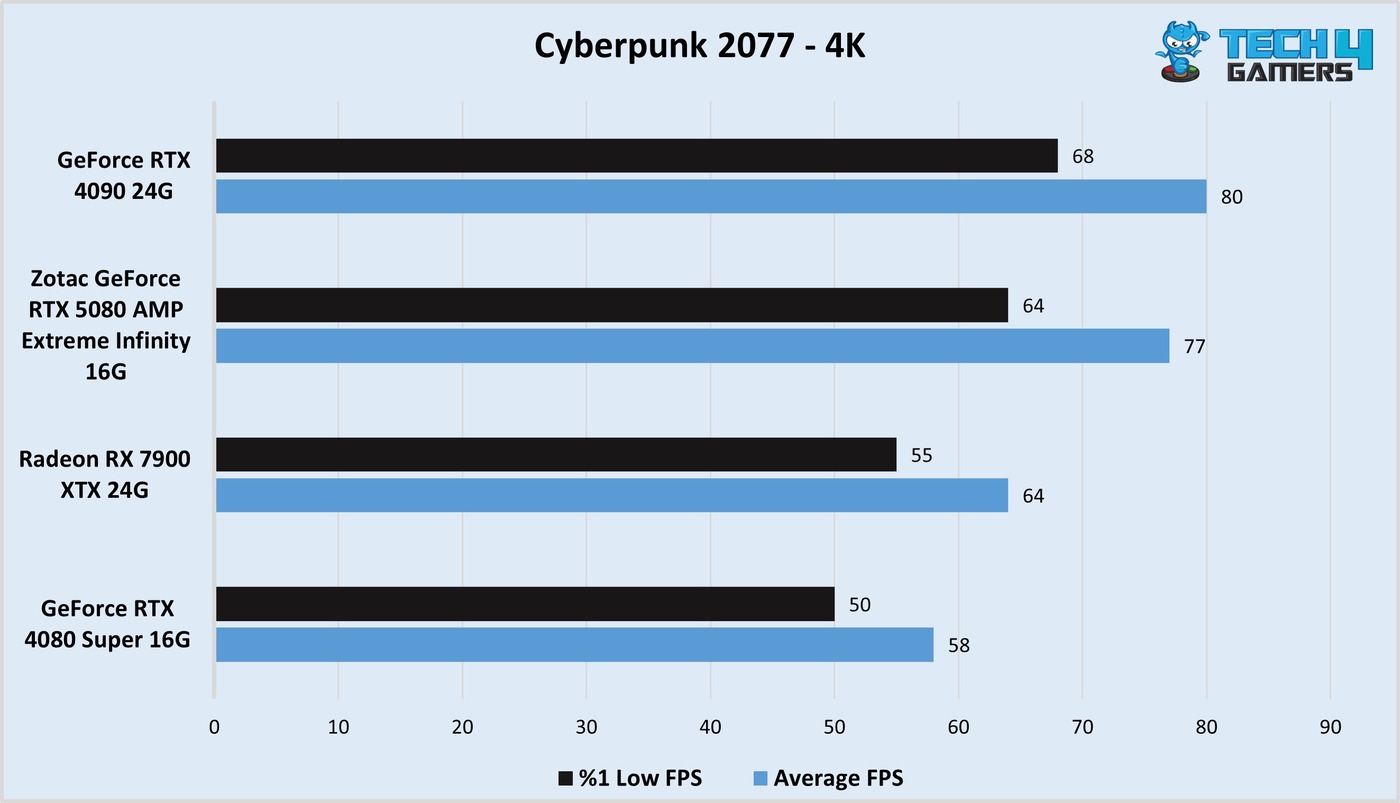
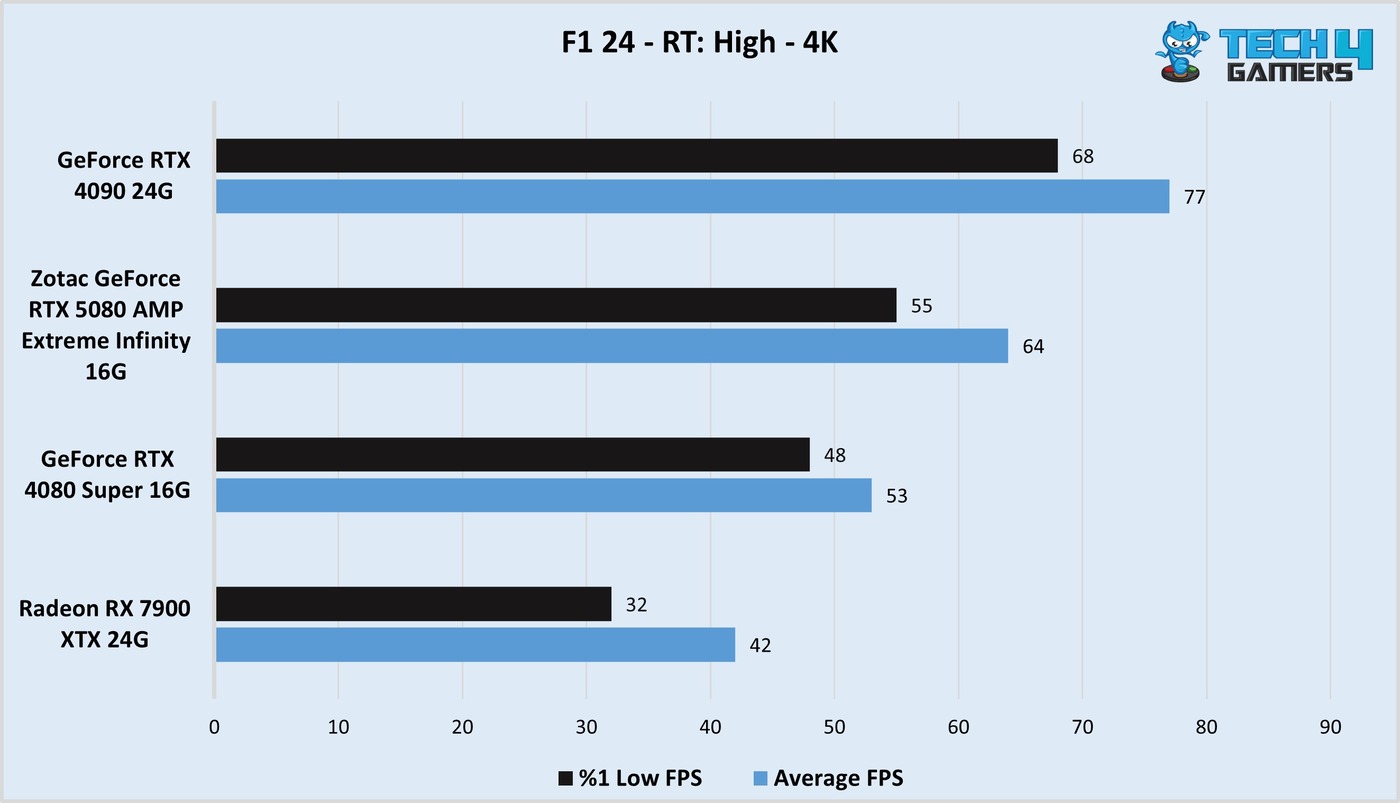

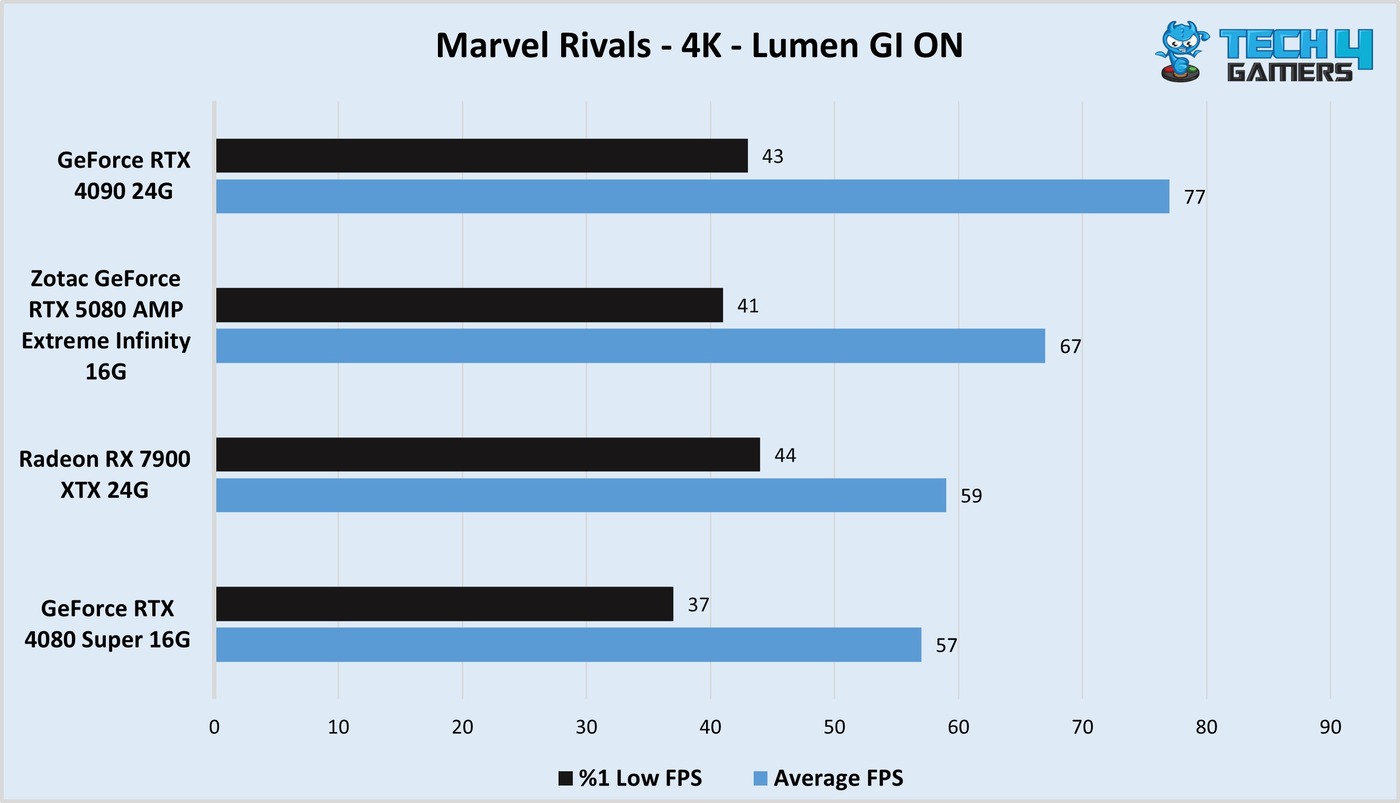
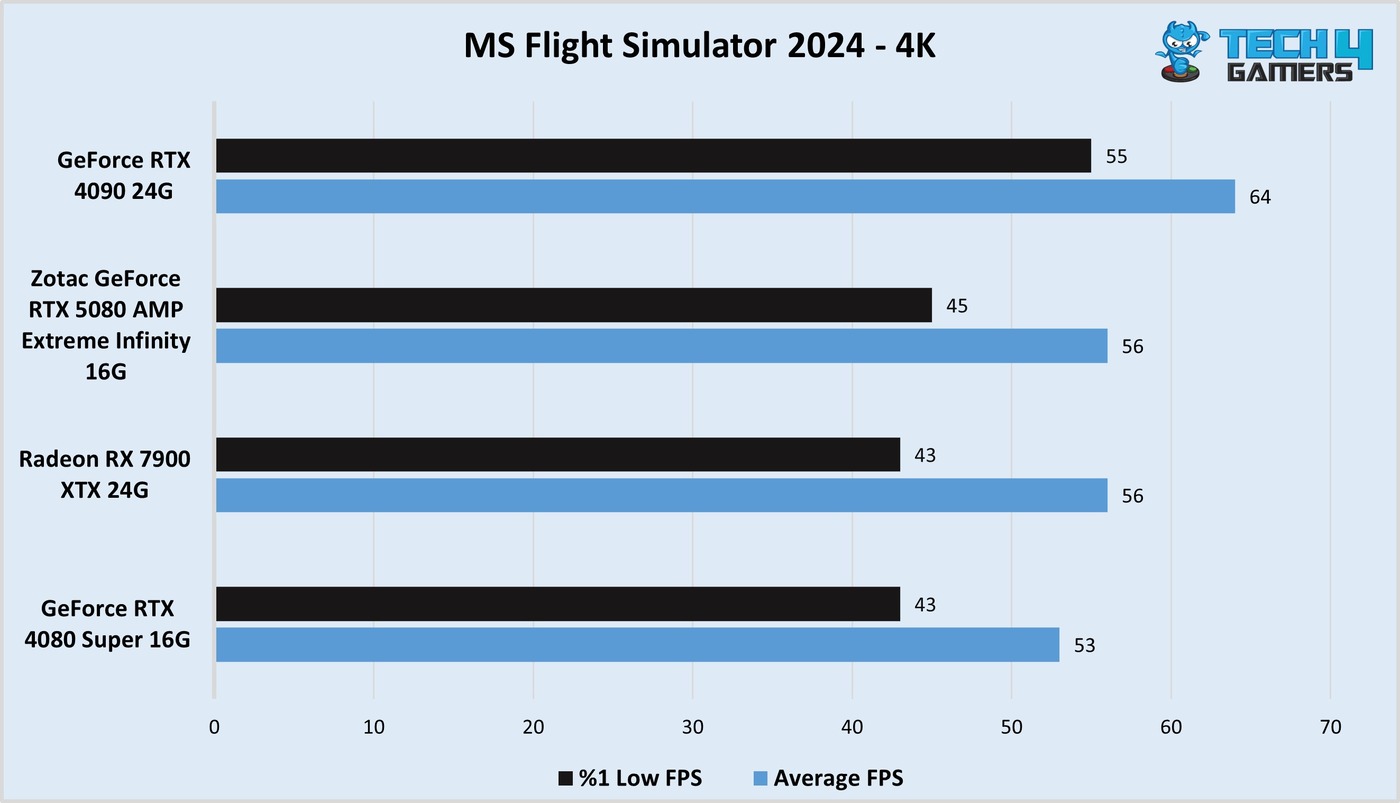
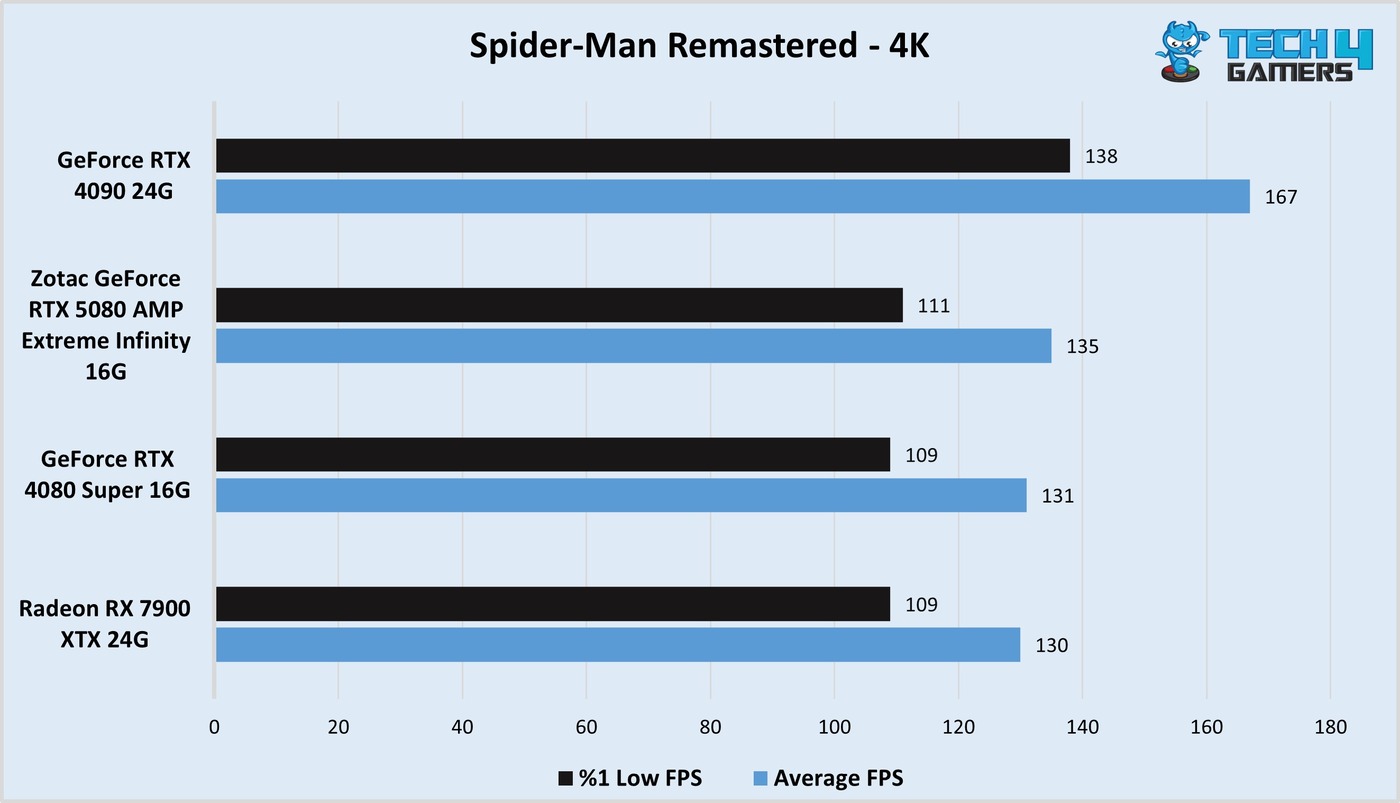
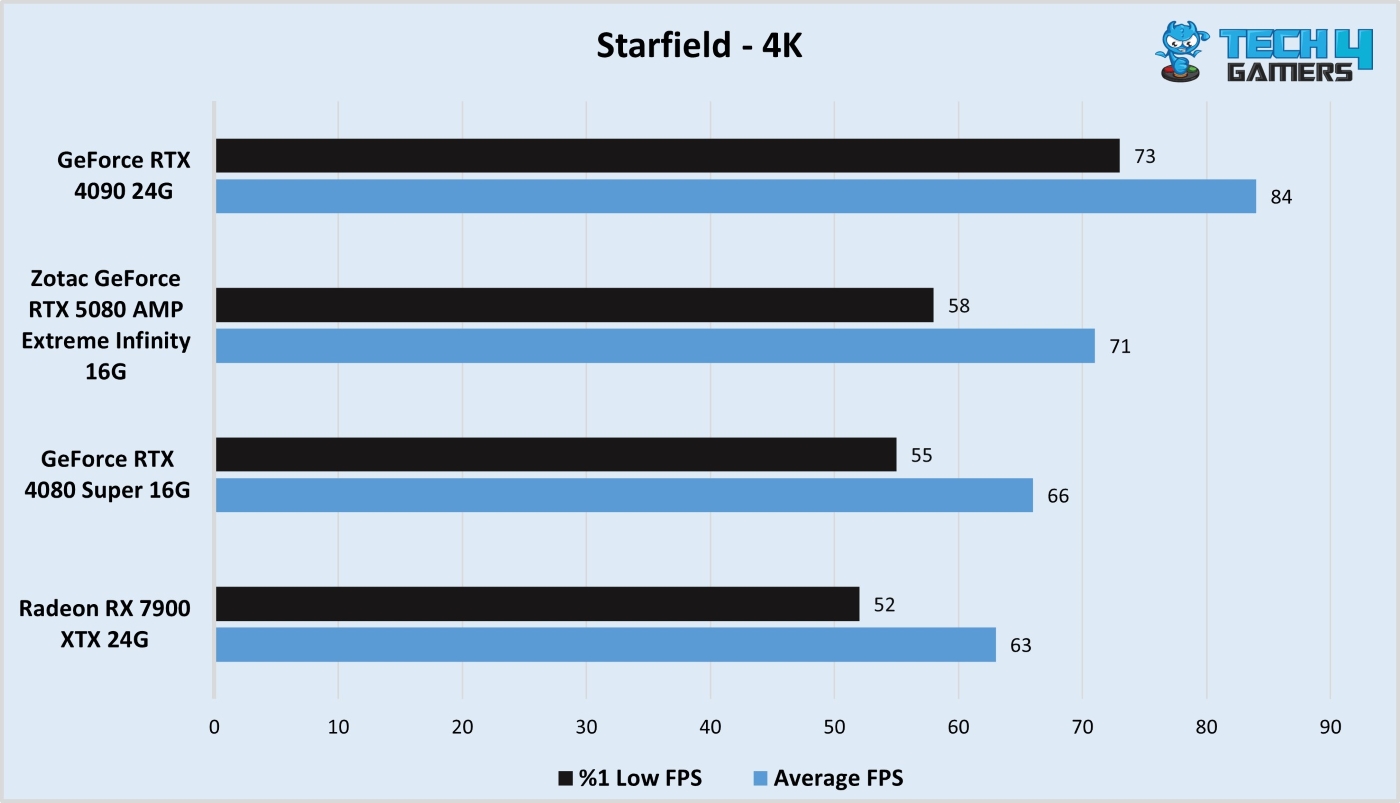
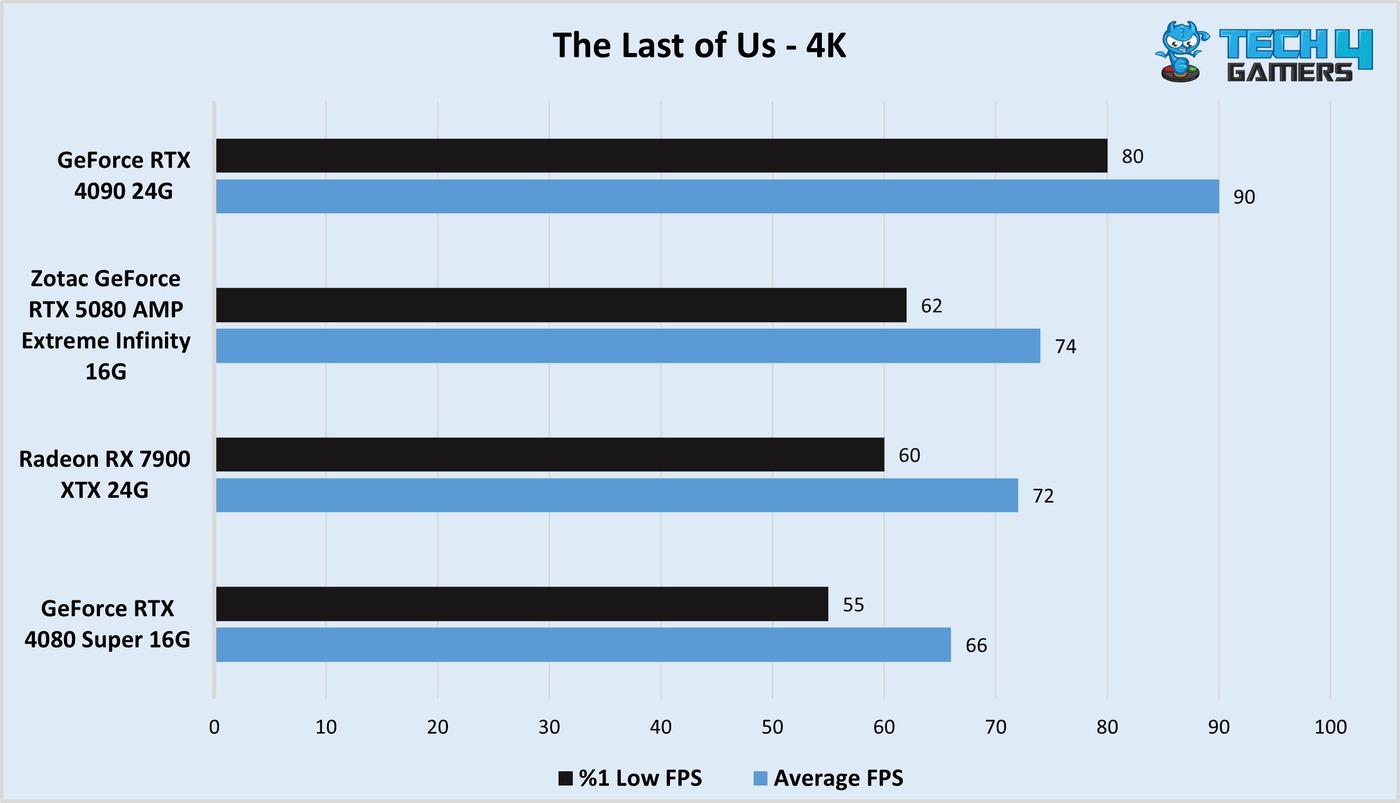
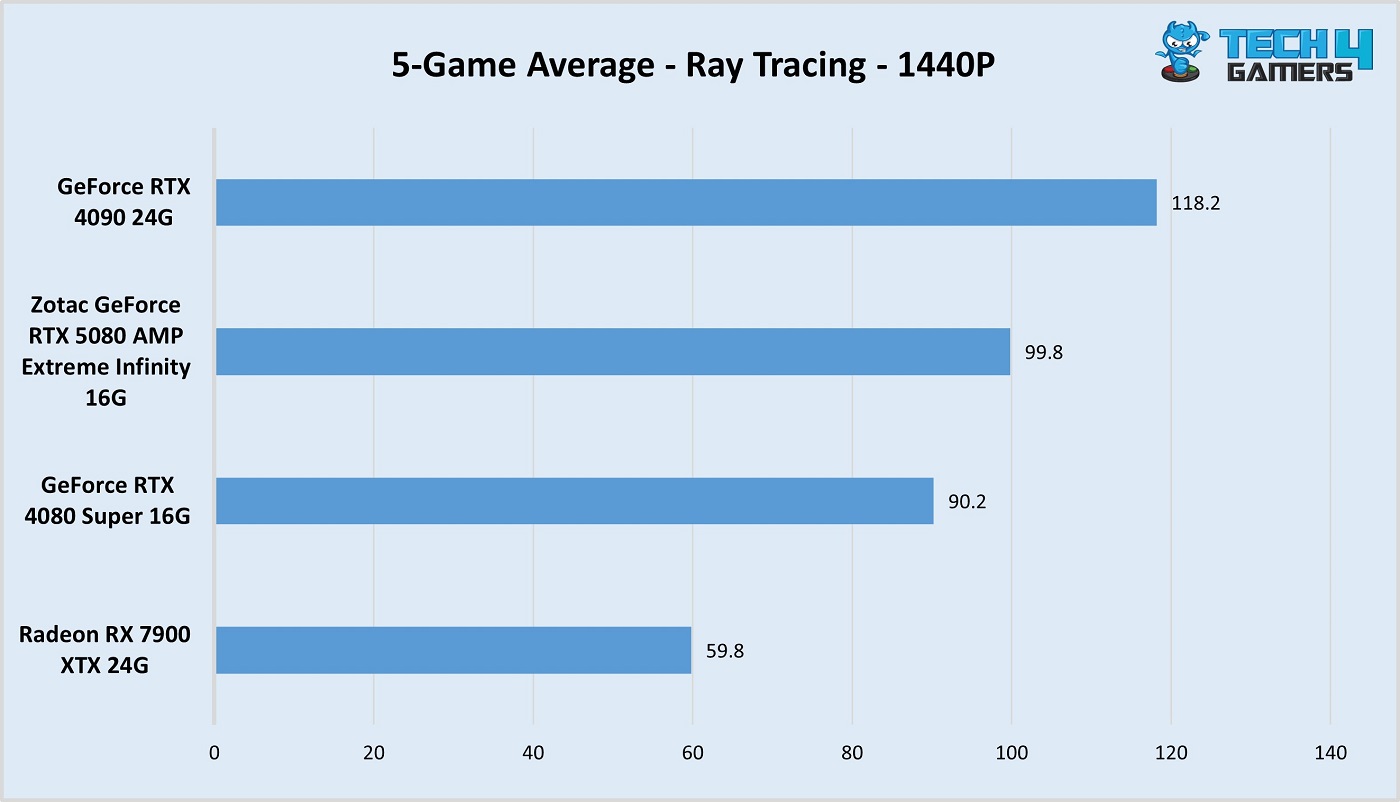
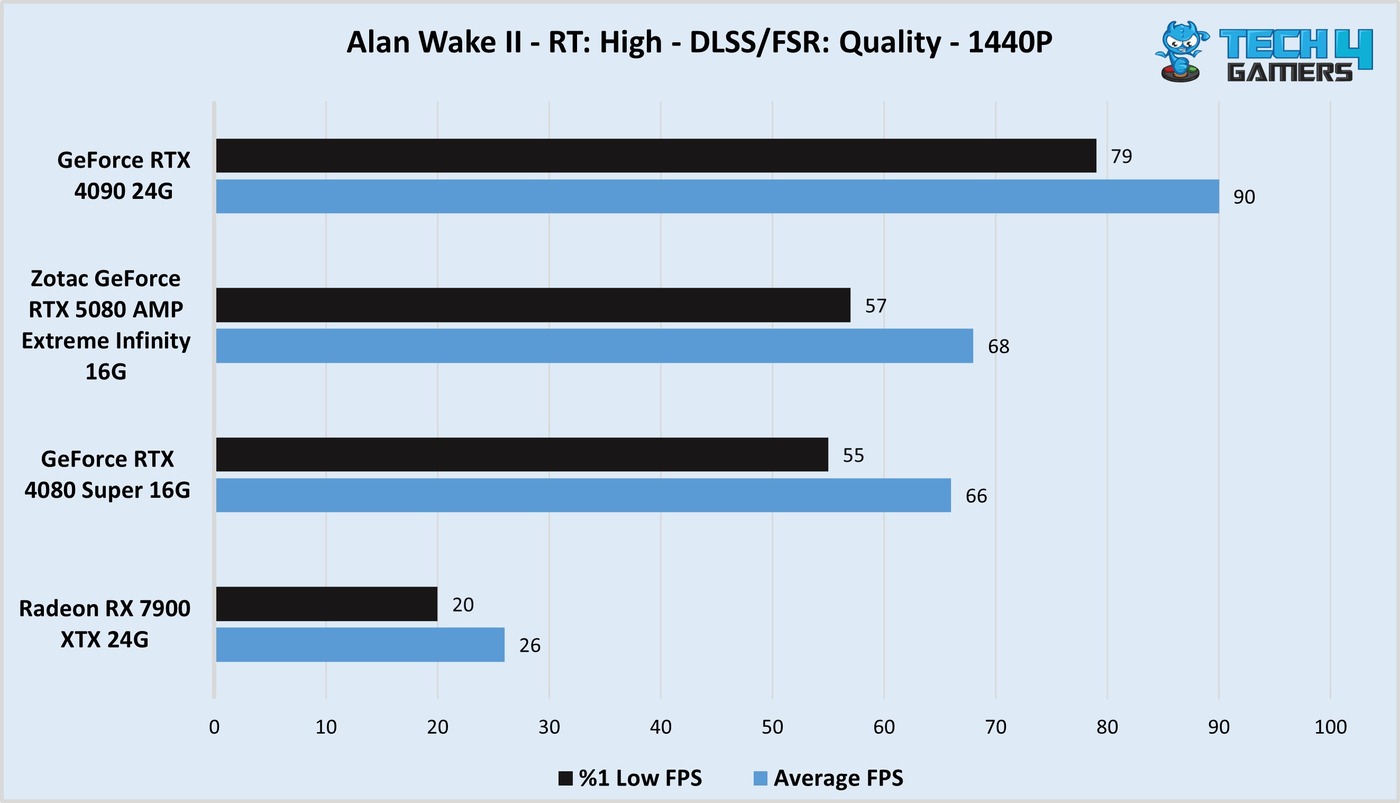
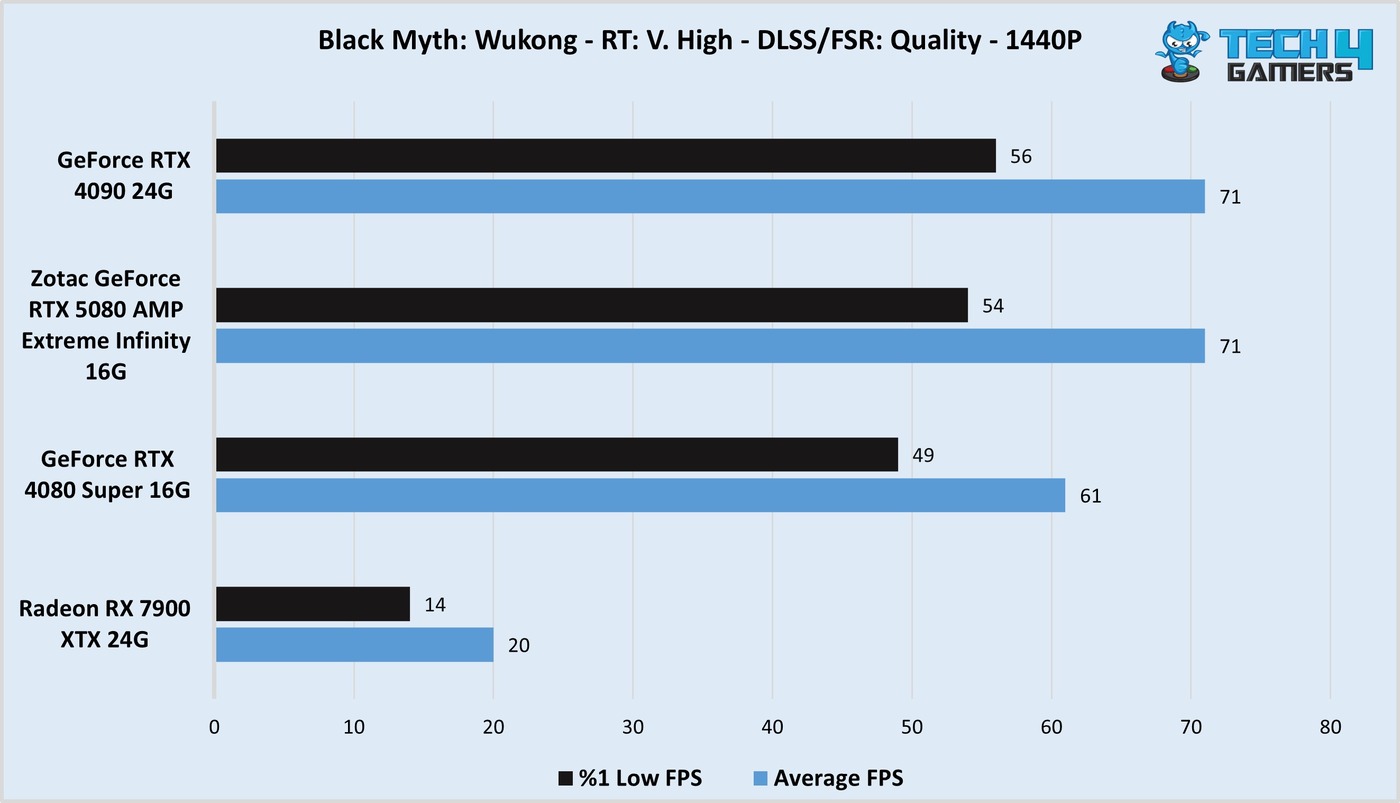
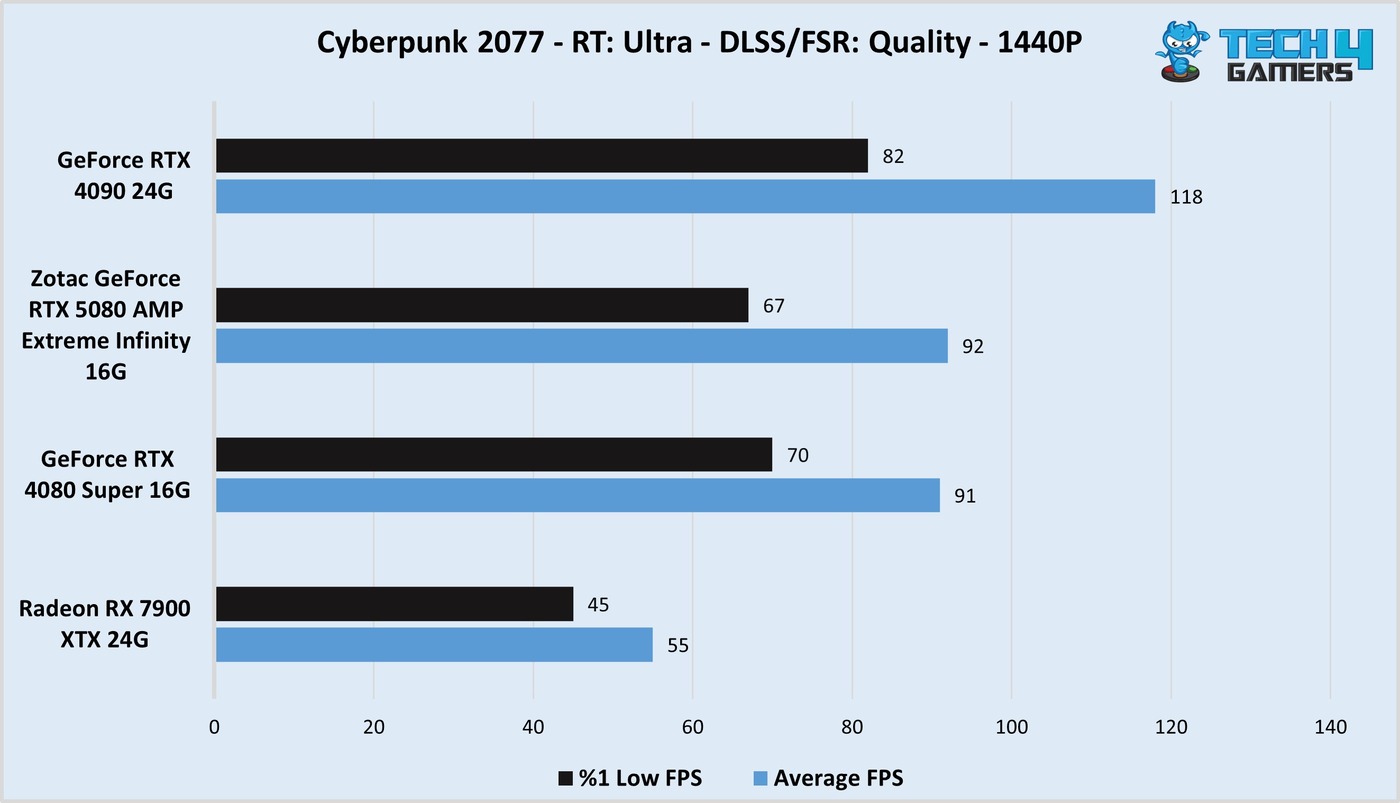
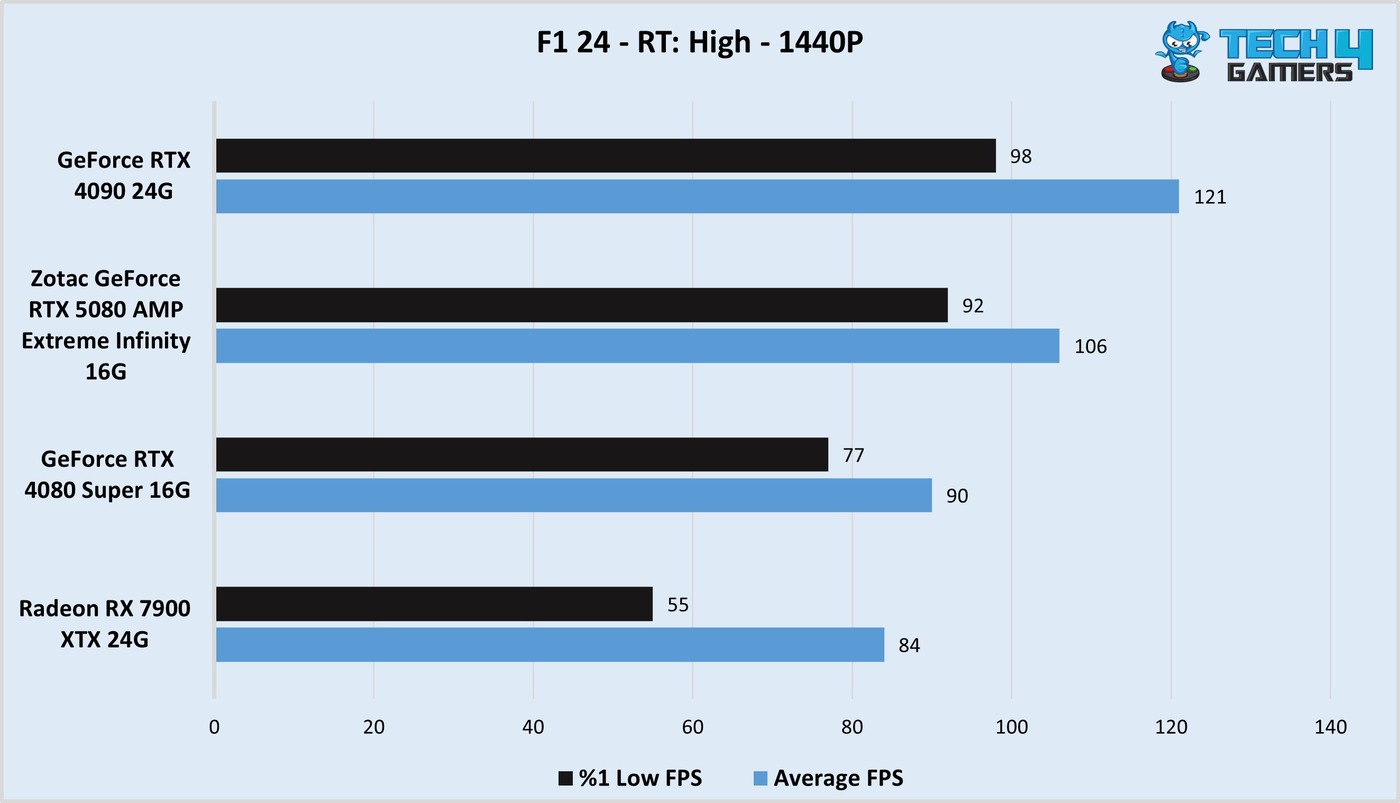
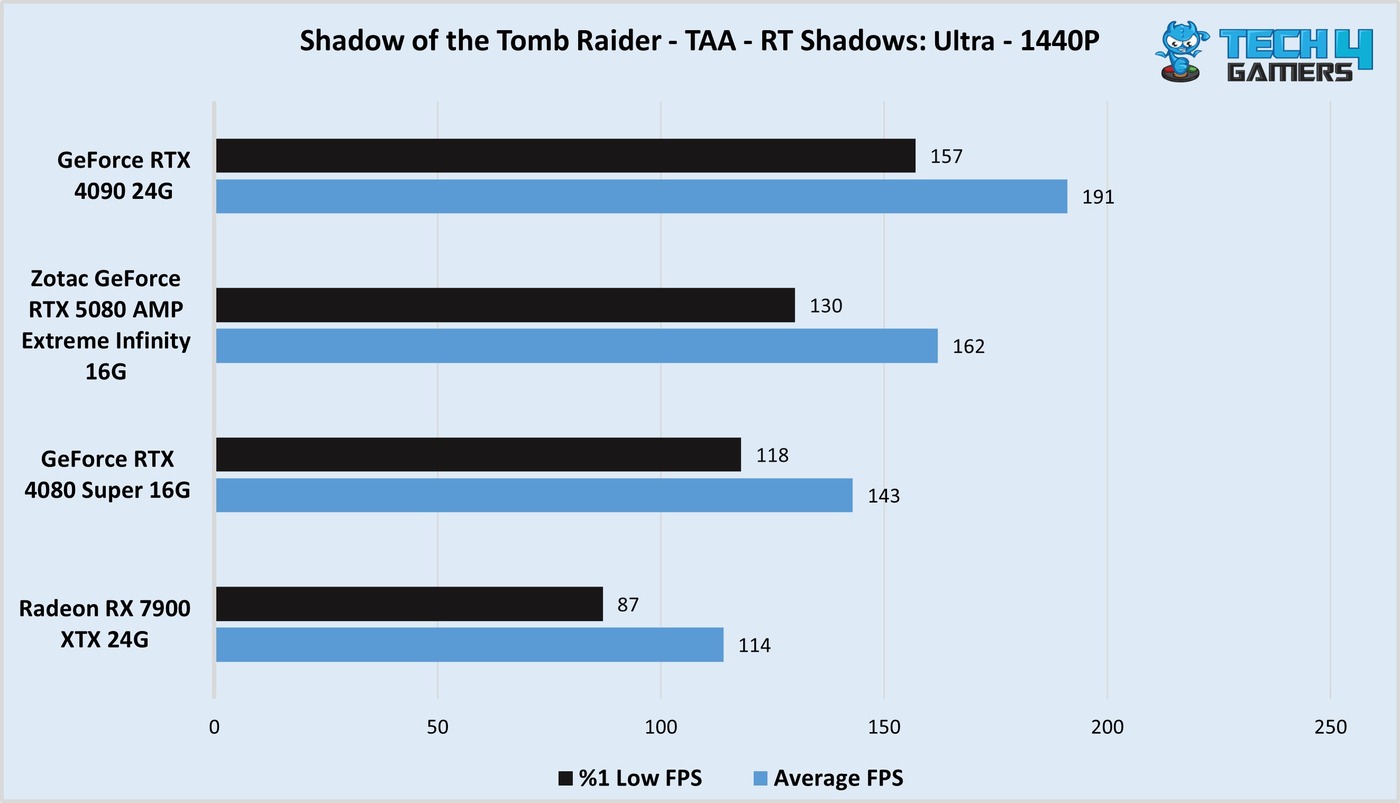
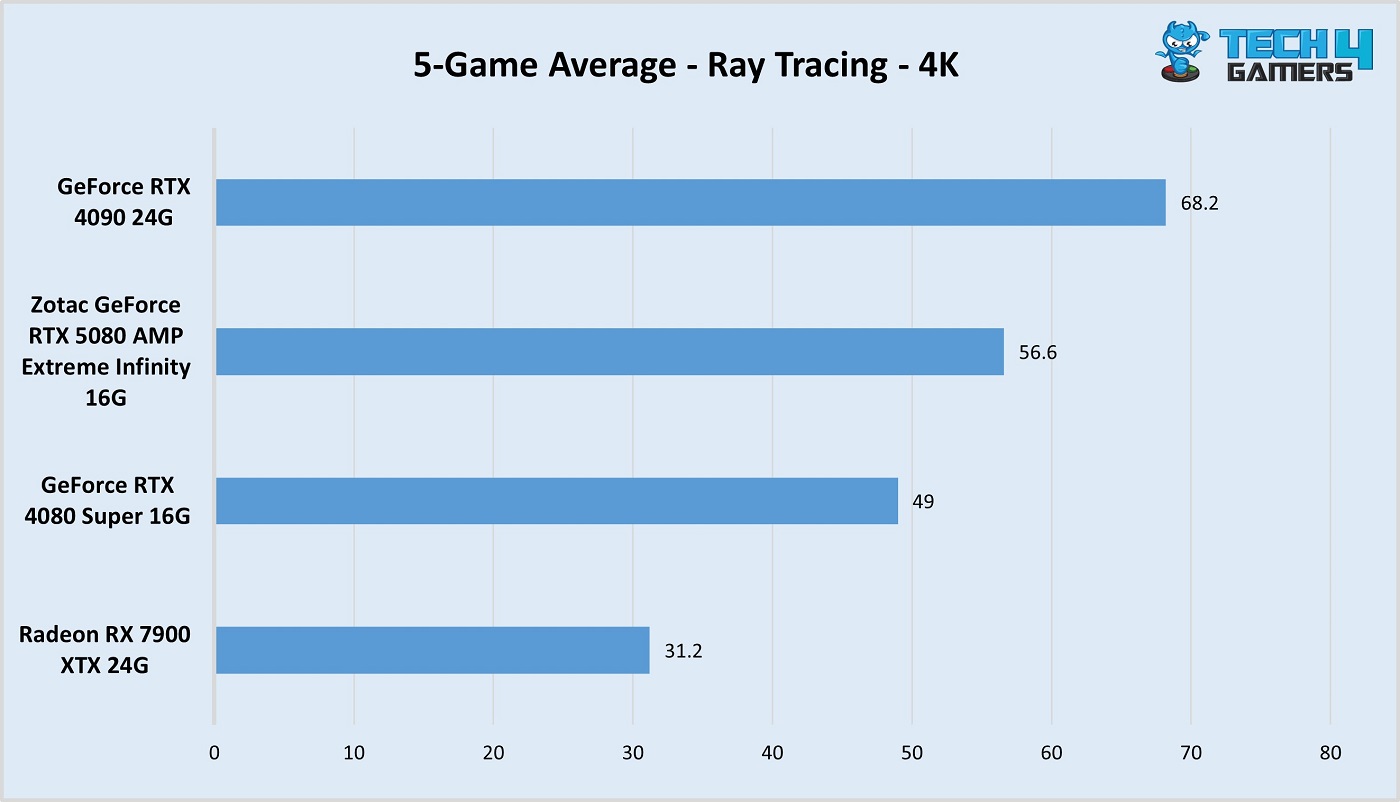
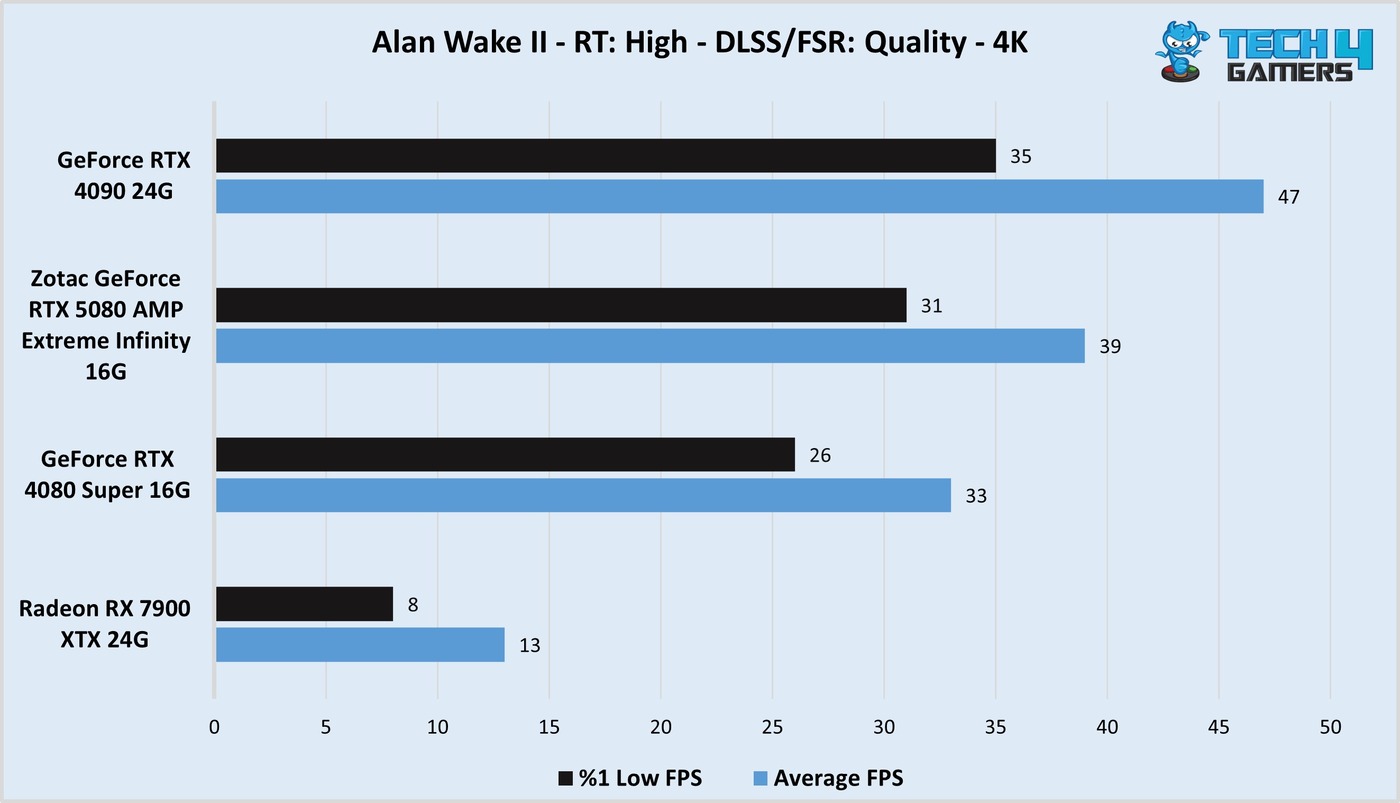
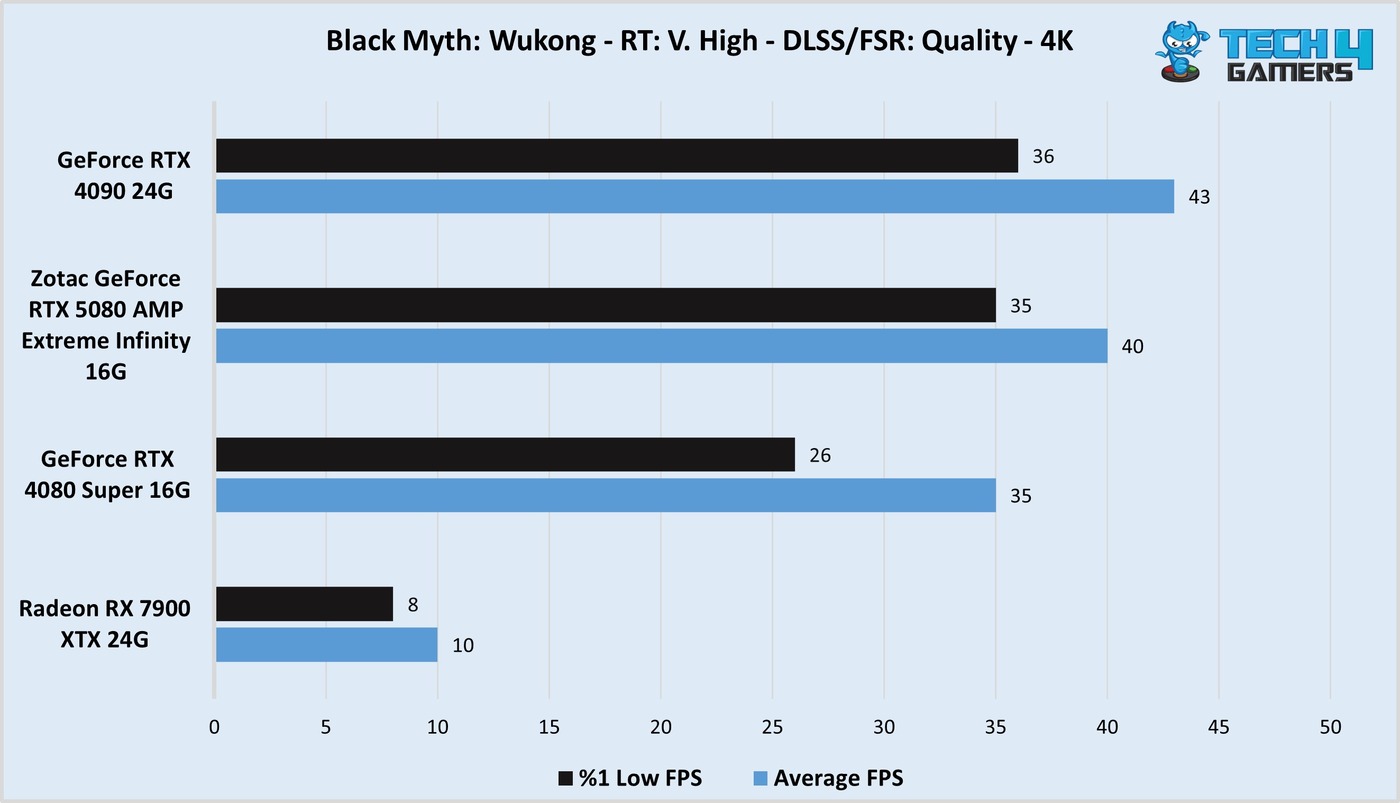
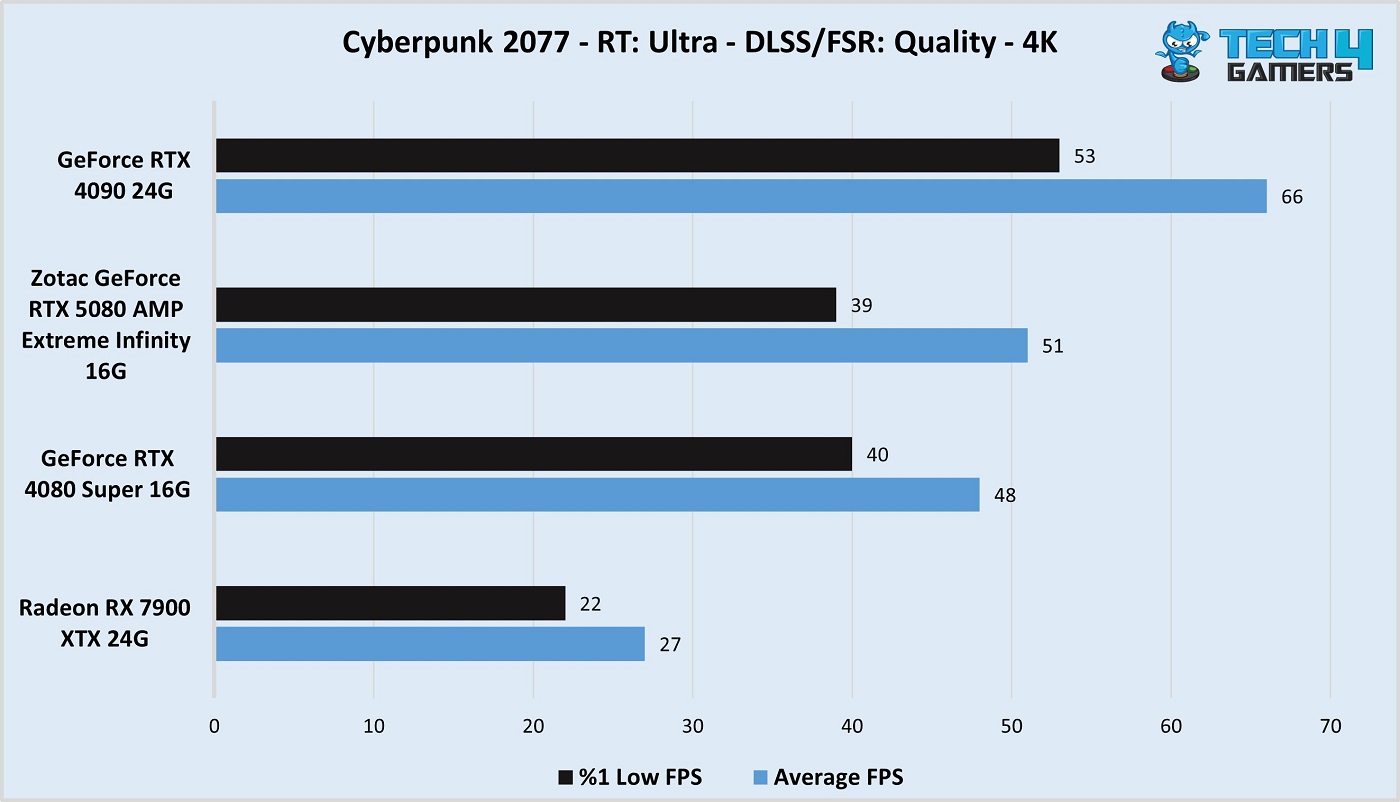
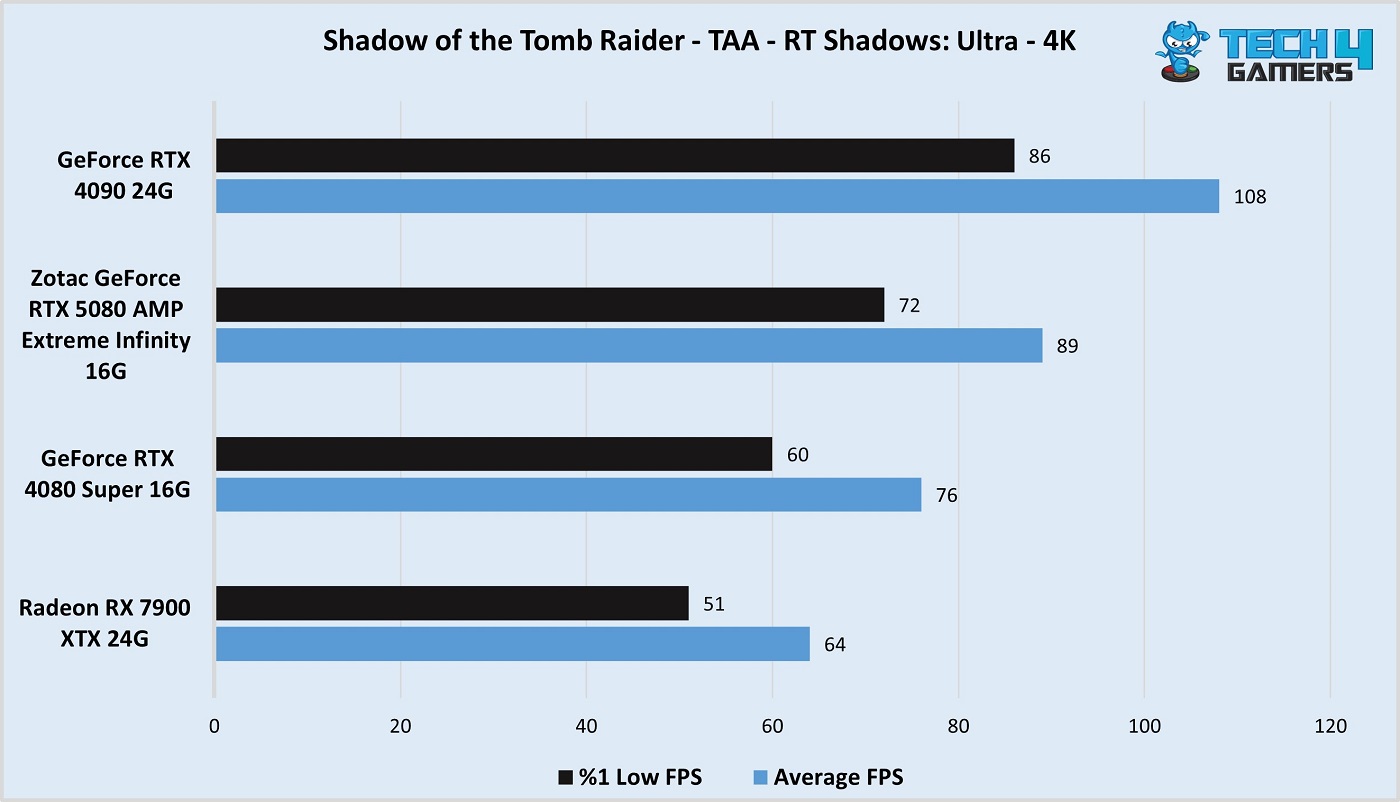
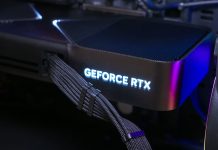
![We’ve Found The Best RTX 3070 Graphics Cards [Our Top Picks] BEST RTX 3070](https://tech4gamers.com/wp-content/uploads/2022/07/best-rtx-3070-218x150.jpg)

